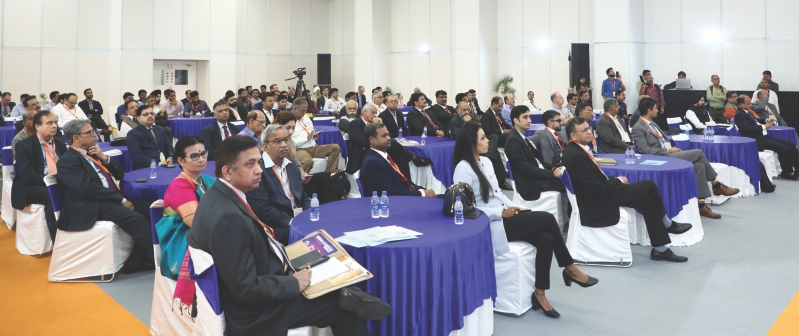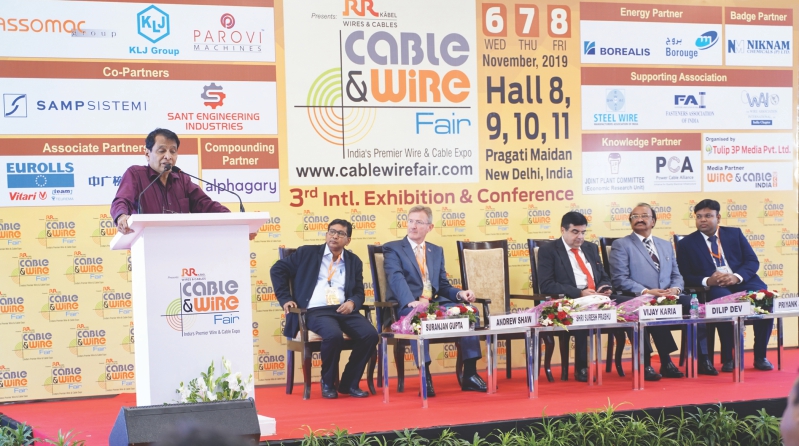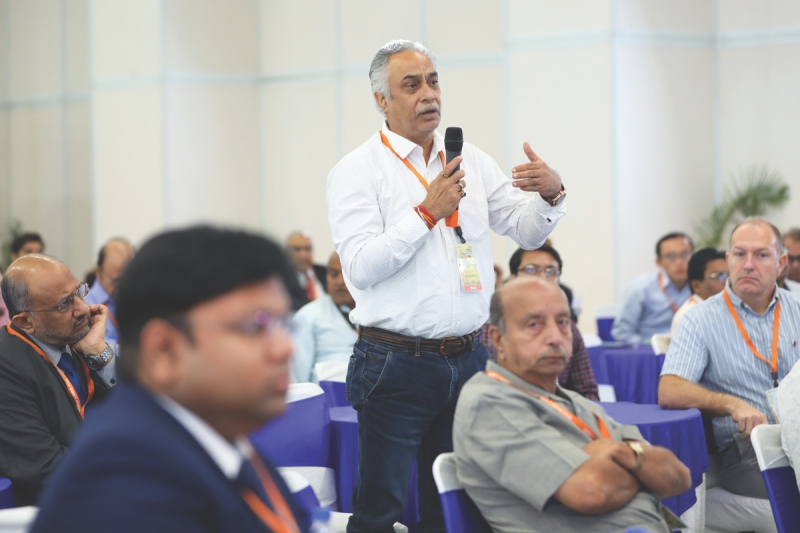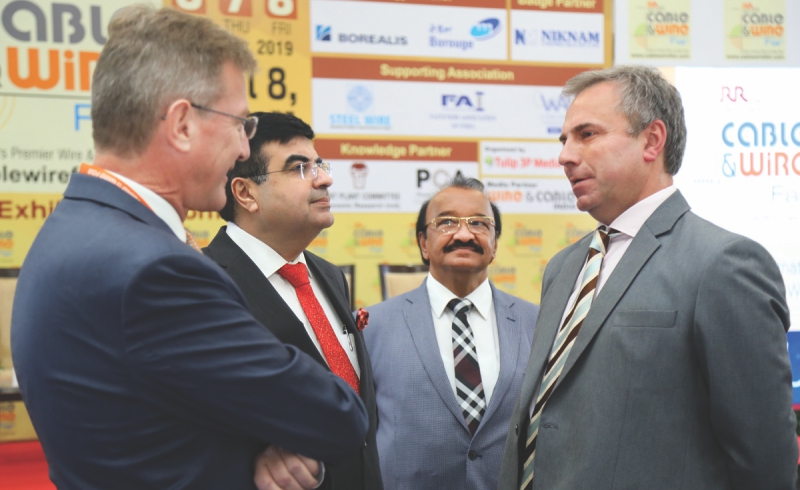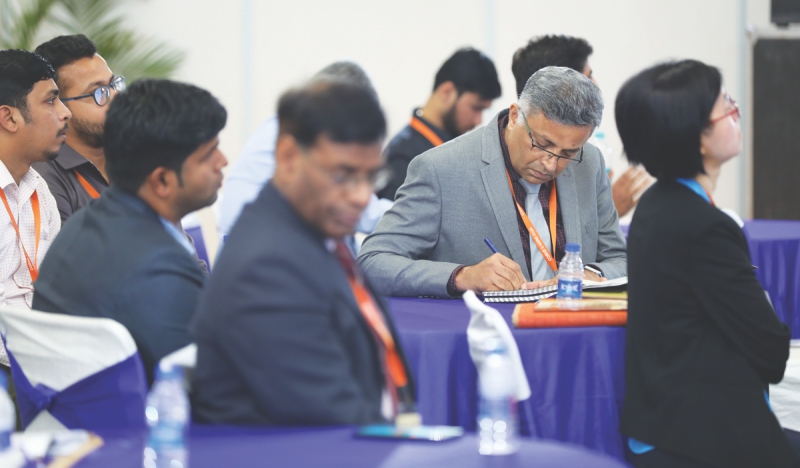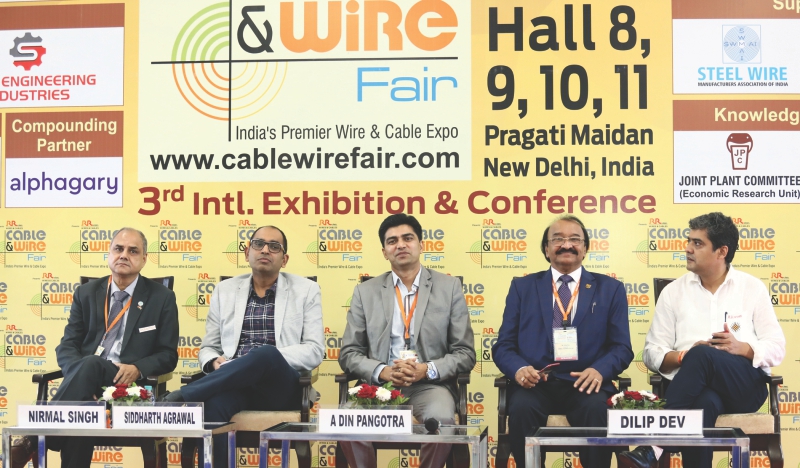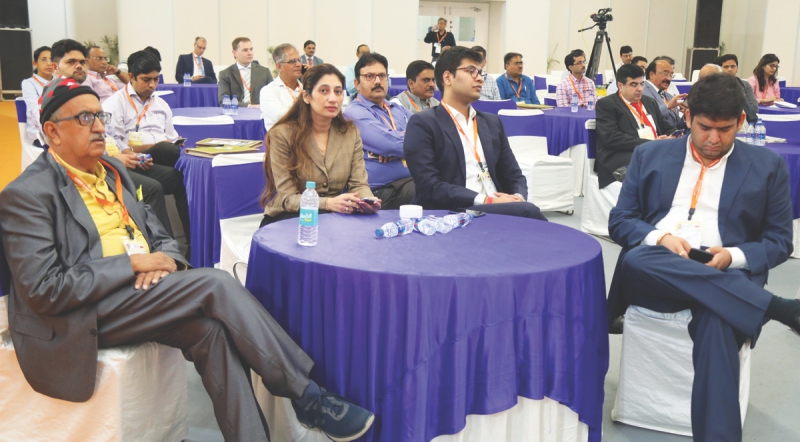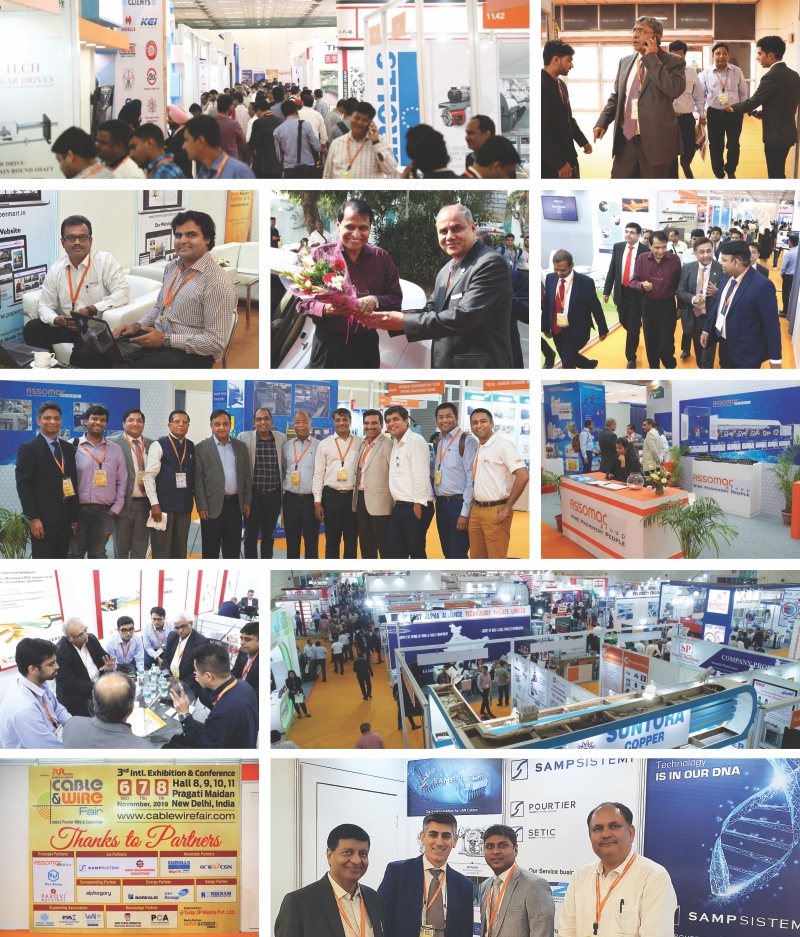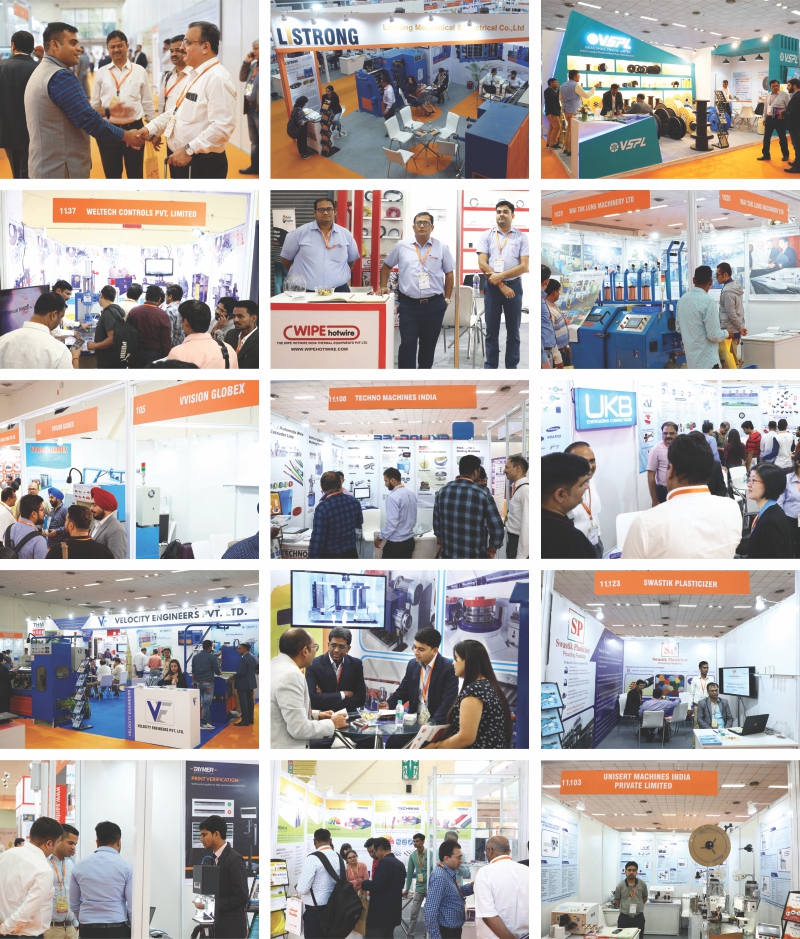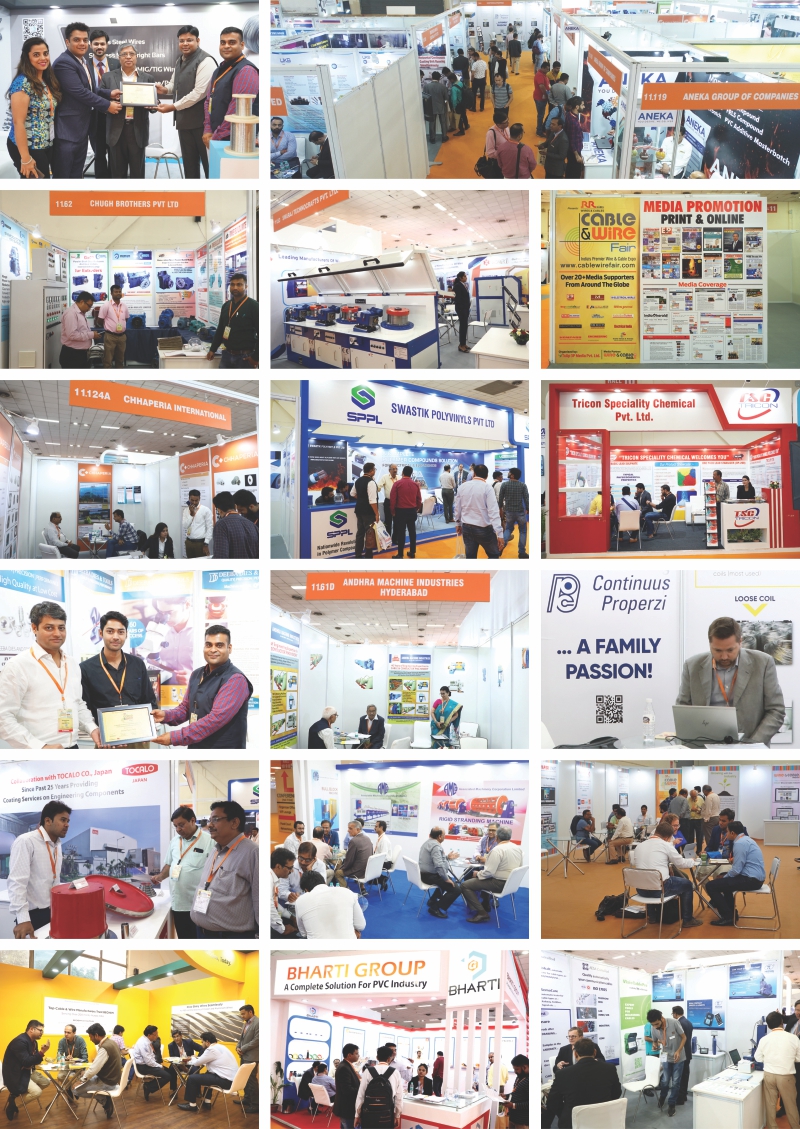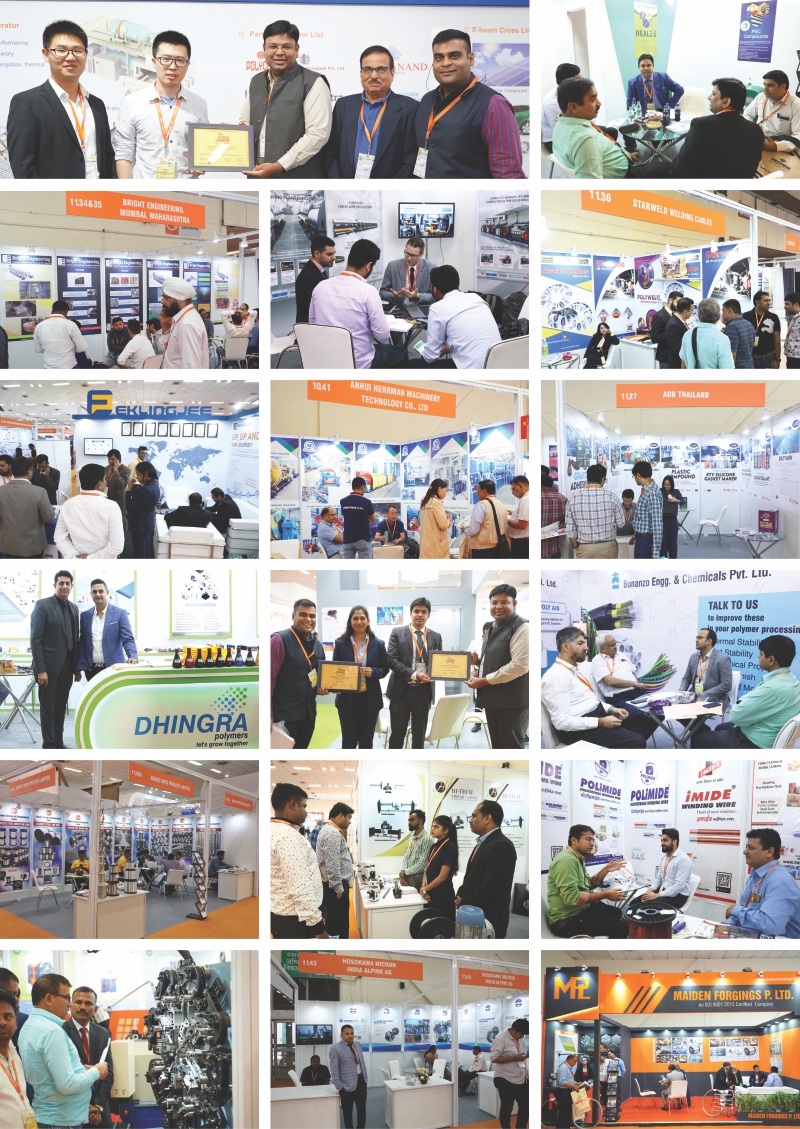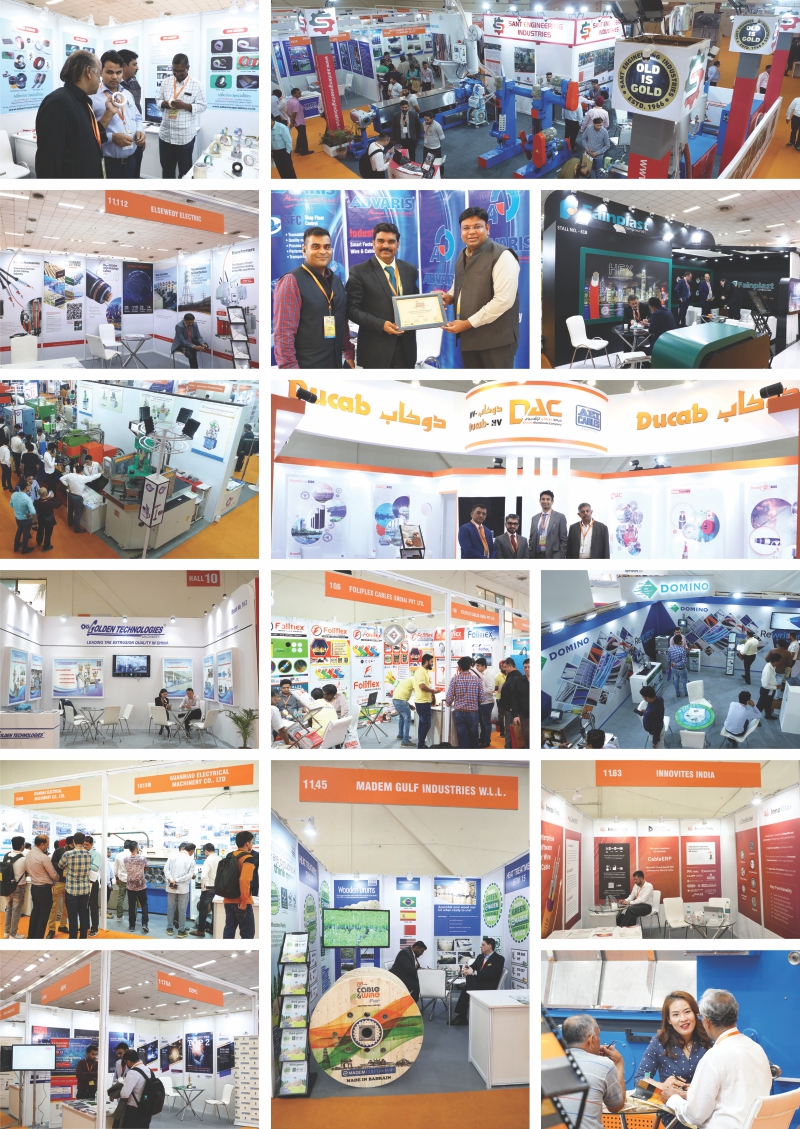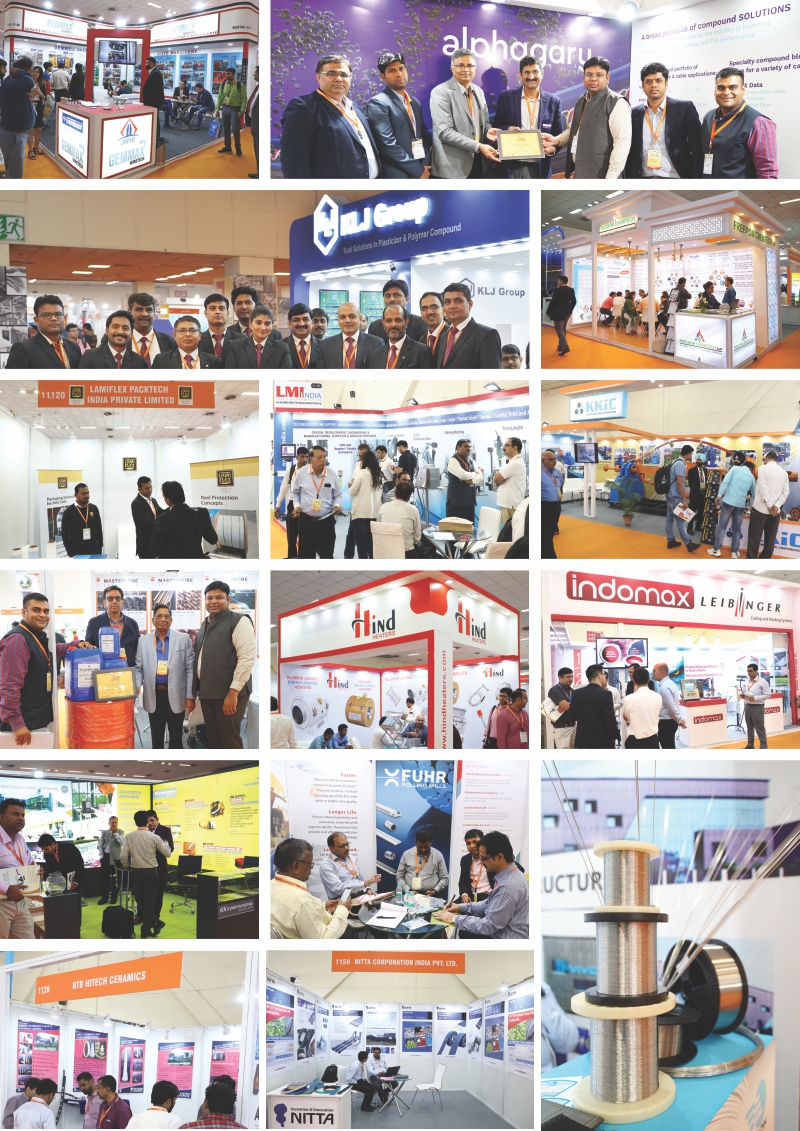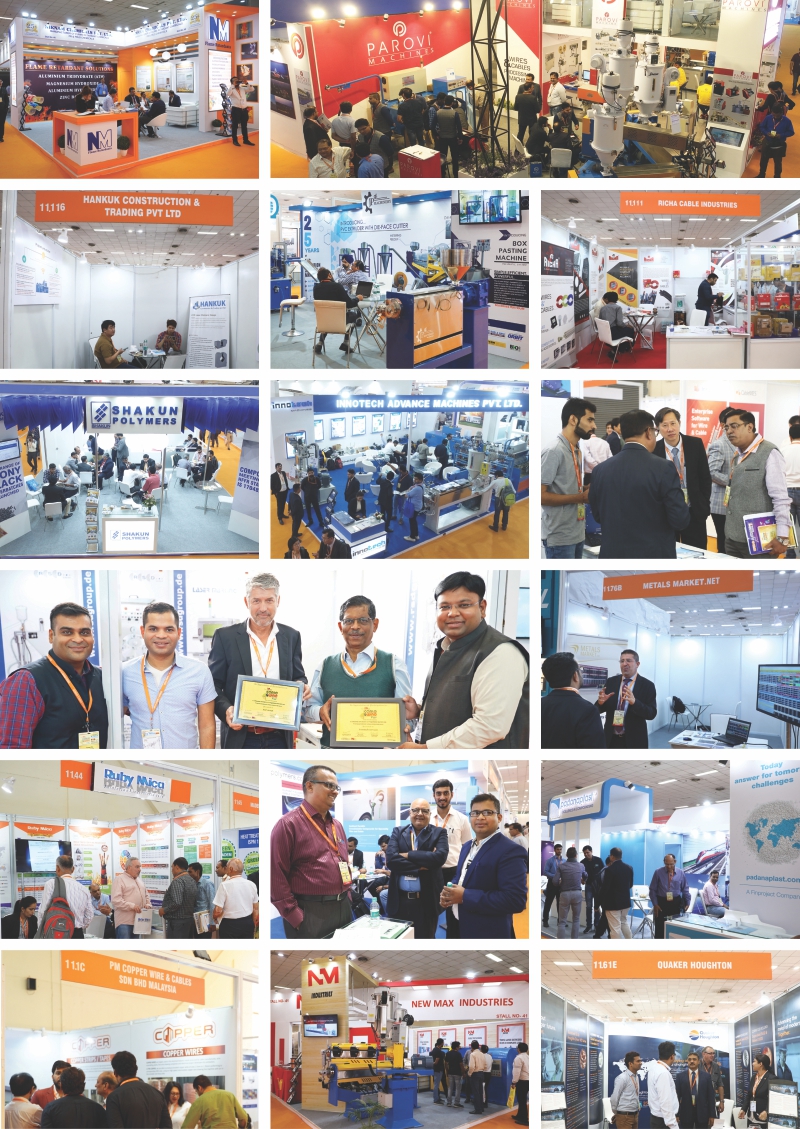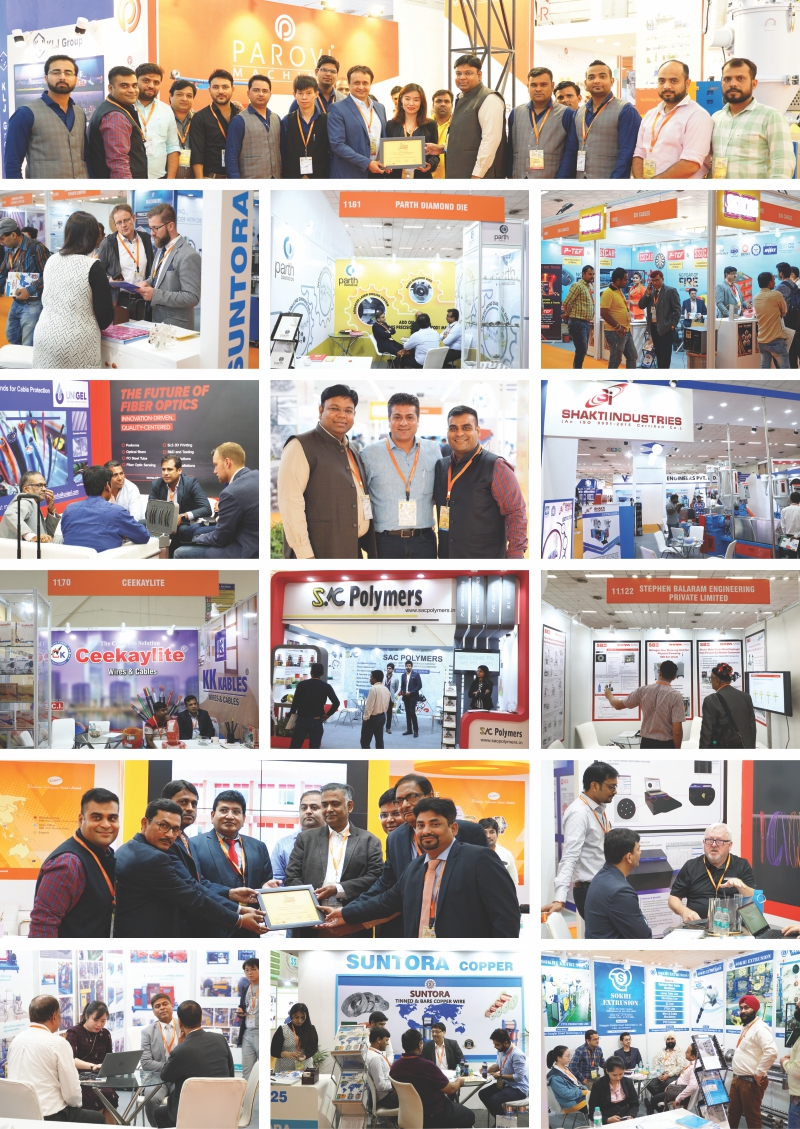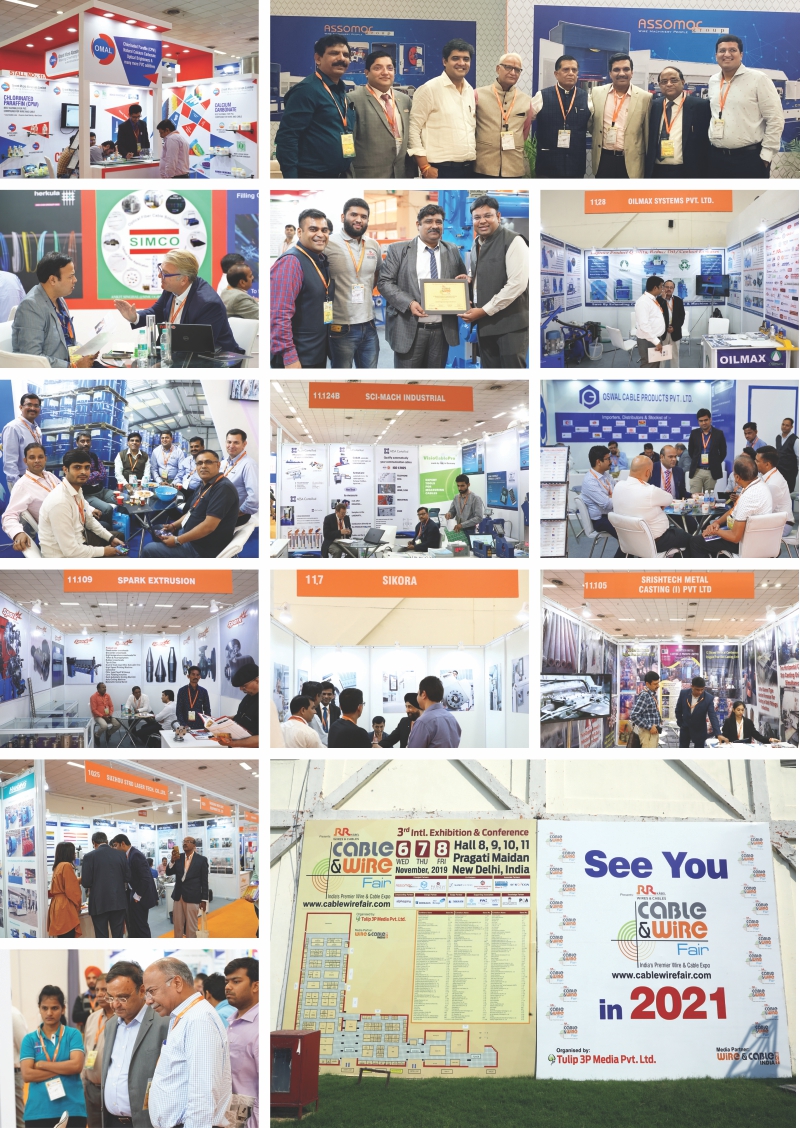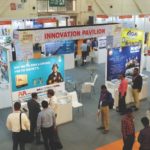Organized by Tulip 3P Media Private Limited at Pragati Maidan during November 6 to November 8, 2019, Cable & Wire Fair 2019 gave players from various segments of the wire and cable industry a golden opportunity to network and to exhibit their products. Many participants and exhibitors at the fair found the event useful also because it helped them in gaining knowledge from the viewpoints and experiences of others. The event saw both local and foreign participation.
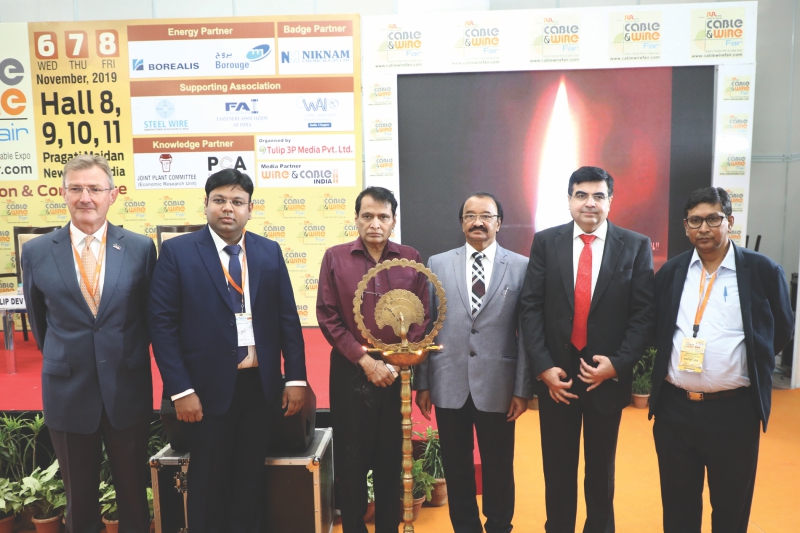
On the first day of the exhibition, Vijay Karia, Chairman and Managing Director, Ravin Group of Companies, opened the morning session and set the tone for the proceedings. He said, “We look forward to this exhibition growing to new heights and encompassing new boundaries. I am happy to know that this exhibition includes an innovation pavilion. I find this idea very exciting. As you know, innovation plays an important role in the wire and cable industry. Unfortunately, innovation in the industry has kind of stagnated or stopped. Competition and extreme price pressure are the main reasons behind the stoppage of innovation. The time has come for the industry to look into how it can reignite the passion for innovation. The growth of infrastructure, industry and demand for electricity has heightened the need for innovation. Innovation is the need of the hour.
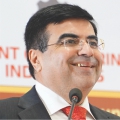
Innovation plays an important role in the wire and cable industry. Unfortunately, innovation in the industry has kind of stagnated or stopped. Competition and extreme price pressure are the main reasons behind the stoppage of innovation.
“I also want to highlight another important issue. Electricity today, especially in the distribution and internal supply segments, has become rather unsafe. The internal supply segment includes buildings, factories, metros and airports. Around 90 percent of fire-related accidents are caused by electricity. India loses around 63 lives, which includes 13 women, a day because of electricity-related fires. India loses 24,000 lives every year because of electricity-related fires; in Russia, around 3,000 lives are lost every year. The difference is huge. The lives lost in the US are in a few 100s whereas the lives lost in India run into thousands. The industry needs to address this issue as soon as possible. Electricity should be humankind’s best friend, not its worst enemy. It always surprises me when I see the sign, “In Case of Fire Do Not Use Elevators.” If you don’t use electricity to go down, then electricity becomes your worst enemy, because you have used it to go up but you can’t use it to go down. With the growing number of high-rise buildings, the industry must address this issue as soon as possible. I feel good when I talk to suppliers of raw materials about compounds, fire-retardant tapes, etc., and they tell me that a lot of R&D is being carried out and positive developments are taking place in this area. This development should be speeded up. We must set aside a substantial amount of money for this purpose. Also, there should be greater collaboration between manufacturers of wires and cables and suppliers of raw materials. Saving human lives should be the main objective of this collaboration.
“The demand for electricity has stagnated in the country in the last few months. Economists tell us that the economy is slowing down. My reading is that this is a worldwide phenomenon. We are seeing this recession across the world and we are going to face this problem perhaps for the next 15 to 18 months. But after this period, the global economic situation should improve. Trade wars are slowly diminishing in meaningful ways, and this development is good for the world economy. When I go across the world and I look at India, I find that the stature of India is continuously growing. Recently, India has gone up substantially in the ease-of-doing business ranking; it has jumped another 13 places. Over the past two decades, India has moved steadily and convincingly towards being the flavor of the world. More and more countries are welcoming Indian products and taking an interest in making investments in India. We also see quite a few Indian CEOs managing companies across the world. On the flipside, a lot of cable and wire companies in India have gone down. Many of them closed down in the last ten years or so. This has happened mainly because of stagnation and absence of proper innovation and new management strategies. Not many new products were launched in the recent past. Companies did not build up brands strong enough to take on the best in the world.
“With India looking for investments and pushing growth, we will see many changes taking place in the industry. I see a lot of specialized products coming into the country. ‘Horses for courses’ is going to be the way the industry will have to function. There will be a demand for specialized cables for sectors such as oil and gas, mining, metros, solar sites and buildings. We have been a bit slow in implementing the national code, but we are on the right path now. We will see companies focusing on the safety aspect and the use of the correct kind of materials. Currently, the emphasis is on price. For instance, the Middle East, which had a lot of money and used copper cables, has now transitioned to aluminum cables and that shows its concern about costs. The need of the hour is to make the products innovative, increase voltages and make cables and wires safer for people to use.
“All in all, in the next six months or so – once we overcome the banking crisis and the finance-related problems that the industry is currently facing – the industry will see exciting times ahead for cables and wires. Let’s look forward to seeing governmental spending, the spending that the government has promised. Let’s look forward to witnessing infrastructural growth. It has already started taking place. Let’s also look forward to seeing new product development, innovations and technologies in the near future. But, most importantly, we need to have lot more collaboration among ourselves so that our products meet the expectations of our customers. What really matters to the customer is the value of our products, not their price.”
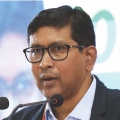
We have been telling the government that the RCEP agreement, if we at all get into it, should be on our terms. There were a lot of industries, the wire and cable industry as well, who gave a lot of input which we conveyed to the government and as of now the government has not been part of the 16-member RCEP negotiation but that does not mean that it is completely out.
Speaking on the occasion, Suranjan Gupta, Executive Director, EEPC India, said, “The wire and cable industry is an important segment of India’s engineering industry. India’s engineering trade and exports are undergoing a huge transformation. A series of bilateral and multilateral issues has been implicating India’s engineering trade, especially engineering exports. The wire and cable industry is also getting impacted, especially the steel wire and cable segment, given the huge business opportunity there is in the country, with the stress given by the government on infrastructure as well as the development of the renewable energy sector where a whole lot of products of this industry will have a substantial opportunity. Looking at the overall climate in India with respect to the trade policy, India has lost the case in the dispute settlement body in the WTO with regard to a whole lot of benefits. We in India don’t call it subsidy – the chapter 3 benefits, the usual MEIS. And there are other schemes such as EPCG, the SEZ, and so on. Some of these impact the steel wire sector. There are problems of pricing with it, especially steel wires and cables. Now the government will probably go to the appellate body soon, and that is where it is likely to get stuck for some time because the appellate body will have just one member by December. So the government still has time. In the meantime, the government has announced a new scheme called ROTEP, and for that we are already sending the formats. The government has now come up with a format for which we require data. The exporters who are members of our council need to fill the data and give us whatever help that is required. These are going to be verifiable data. So I want to take this opportunity to encourage domestic manufacturers in particular to give the data. If they need any help regarding this, they can contact me.
“Also, there has been an inversion of duty because of various free-trade agreements. The international prices of steel is generally lower than the domestic steel price and that has been a recurring problem for the steel and wire industry as well; and within the ambit of the WTO rules, we are also looking at a mechanism where it is possible for the steel majors – the steel companies – to sell the raw material at international prices or export parity price to domestic manufacturers. I hope that will enhance the competitiveness of production and exports of out steel and wire industries.
“Recently, there was a worry over India getting into the RCEP agreement, and that is where EEPC has been playing a very active role. We have been telling the government that the RCEP agreement, if we at all get into it, should be on our terms. There were a lot of industries, the wire and cable industry as well, who gave a lot of input which we conveyed to the government and as of now the government has not been part of the 16-member RCEP negotiation but that does not mean that it is completely out. If the other 15 countries recognize the non-tariff barriers that Indian exports face and if they do, especially in the cable industry and especially when these things relate to project exports, there is a whole range of issues that will impact our exports to some of the RCEP countries from which we import a lot. That is where there is going to be a huge transformation in terms of our domestic manufacturing landscape. Some time back, the finance minister also announced the huge revision in corporate taxes, which makes India one of the best direct tax regimes. If you look at the 2015 World Bank Report, you will see that in terms of trade openness index, India is much better than both the United States and China. That is something that we can actually see from the trade data. Look at any sector, and you will find that the balance of trade is always in deficit. That is why we have to rely so much on capital account transaction, and hence there is a huge opportunity, given the stress on infrastructure and the focus of the government on enhancing the share of our manufacturing industry from 16 percent of the GDP to 25 percent in the next 5 to 6 years. There is going to be a lot of public investment. There is a huge scope for the cable and wire industry, the renewable sector, and so on.”

There is an ever increasing barrier in GCC. When I came to the region 12 years ago, the GCC was on the way to becoming a common market where trade was encouraged within the region. There were no barriers. UAE products were welcomed in Saudi Arabia as equal to Saudi Arabian products. That is no longer the case.
Speaking on the topic “Middle East Market Outlook: Challenges and Opportunities”, Andrew Shaw, CEO, Dubai Cable Company (DUCAB), said, “When we look at the trends in the Middle East cable industry, we see slower growth, increased market barriers, particularly in the Gulf Cooperation Council (GCC), and the growing importance of regulation and the opportunity that the regulation gives us as an industry to improve our lot in terms of quality and safety. In the GCC, it is all about the price of oil, and the term “lower for longer” was first coined when the price of oil first dropped. This term is now accepted as the truth. Oil prices are going to stick around the $60 mark – that seems to be accepted – and in the GCC that means that national budgets have now been set assuming that oil price. What that means is that development – infrastructure spending – has decreased. The GCC average GDP growth for 2019 is only 2 percent. Gone are the heady days of 6, 7, and even 8 percent of GDP growth which we had in 2005, 2006 and 2007, which incidentally, promoted the growth of the cable industry in the GCC. Saudi Arabia is at 16 percent for this year along with the average for the whole of Middle East and North Africa (MENA). Egypt is at 5.6 percent. Since the revaluation of the currency and the infusion of money from the Gulf, Egypt has had a fantastic run, and it has been run for the economy and the cable industry. But for the rest in the GCC, the industry had to get used to the fact of life that we cannot expect GDP growth to increase in any great way. This now the new norm and we better get used to it.
“So, lower economic growth means lower project awards. In the GCC, with one or two exceptions, the number of contracts awarded is going down. The only good news is the growth of awards in Saudi Arabia. Finally, after three years of relatively low project awards, things have begun to pick up and money has begun to flow in Saudi Arabia. This is good news for the rest of us in the region in that the Saudi capacity has been hungry and looking for a home and now, hopefully, that capacity will go back to Saudi Arabia, taking the pressure off the margins in the rest of the region. We really do need that money to start spending.
“There has been very little growth – single digit, 1 or 2 percent volume growth – in the cable industry production and the GCC and in the demand. With GDP of only 2 percent, we cannot expect much more in either cable or wire production. They are still important to the region of product that is not yet made in the volume, particularly EHV – although that now has changed – some overhead line and some specialty cables. We estimate there is about a million tonnes conductor capacity in the GCC and the current demand is about 650 tonnes. So there is a huge overhang of capacity in the GCC which is helping to keep margins down and financial results pall. This is the two extremes: On one the one hand, you have the fantastic results from the Egyptian industry on the back of the strong economic growth and on the other, you have the sad story of Saudi cables, which has been struggling with no cash for the last 10 years, probably more. In the middle, you have the current level of performance of coated companies in the Gulf of may be 3 or 4 percent operating profit levels and an unacceptable return on capital employed. But that is a consequence of over capacity. It is a consequence of low market growth. And it does not help with all that background that the market barriers are increasing. It is understandable but it is not helpful. Of late, every Arab GCC government has been focused on producing or providing more jobs for its youth within the country, which of course mean a focus on industrialization and employment opportunities in the country. If you couple that with recognition that the oil economies must diversify, become more industrial, then there is a strong focus on promoting local industrialization and then protecting it.
“There is an ever increasing barrier in GCC. When I came to the region 12 years ago, the GCC was on the way to becoming a common market where trade was encouraged within the region. There were no barriers. UAE products were welcomed in Saudi Arabia as equal to Saudi Arabian products. That is no longer the case. The majority have now placed trade barriers. Let us call them in-country or in-kingdom value. Regional inter-trade has become increasingly difficult. For DUCAB, which is a large company in a relatively small country, this is quite a problem. We are built as a regional supplier, not a national supplier. For us and others like us, this fragmentation of what should be a regional market poses quite a problem.
“Finally, let us look at what’s happening with regulation. I see this as a bright spot. This is an opportunity for us in the cable industry, be it in India or UAE or the Gulf, to really improve our lot. We have seen the trend in the last five years for growing regulation – a growing focus on safety, on the quality of cables and on the quality of appliances. So, in the UAE, for example, we have a government agency, ESMA, a standardization metrology body, that certifies appliances. They are inspecting appliances on the market; they are forcing recalls of unsafe equipment; and they have now said they will start inspecting cables. We are working with them and the Dubai customs to stop fake cables or substandard cables coming into the country. So, with more regulations, comes more compliance, with compliance comes more consequences. We will be getting to see that in the UAE, Saudi, and Qatar. For the responsible members of the industry, this can only be good use.
“It is good business to focus on innovation, on bringing new fire-safe products to the market. But it is also a moral obligation, and it is also essential in terms of our reputation in the industry and reputation as companies. None of us wants our names associated with fire-related accidents and loss of lives. So, it is an opportunity for collaboration in this industry; and as an industry, we need to focus on and encourage regulation and develop ourselves to enhance fire-safety products, helping our installers to install them safely and working with the authorities to enforce regulations to keep the bad actors out.”
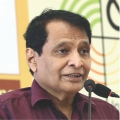
As more and more technology will come, we will need more and more cables and wires. So, the wire and cable industry will keep on growing. It surely has a bright future.
Sharing his perspective on the industry, Chief Guest Suresh Prabhu, Prime Minister’s Sherpa to G7 and G20, said, “You all represent an industry without which nothing much can happen in modern life. We need cables and wires to conduct most of our activities. In the absence of wires and cables, we cannot speak to one another like the way we are speaking here. The wire and cable industry is therefore a very important part of the industrial landscape. Wires and cables are used in many industries. Telecommunication, aviation, and energy power are just a few examples.
“The wire and cable industry is growing in different directions. Sometimes we do not realize the importance of wires and cables – and that is because we usually attach importance to things when we actually see them. But many a time the most important things are not directly visible. For instance, you cannot use a computer unless there is a processor inside, but you cannot see the processor. Wires and cables are more effective when they are not directly visible. As more and more technology will come, we will need more and more cables and wires. So, the wire and cable industry will keep on growing. It surely has a bright future.
“When I was power minister, around 18 years ago, I called the Central Electricity Authority and asked them what standards they had for various electricity-related areas – transformers, wires, cables, etc. I was told that they did not have any specific standards. So, I initiated a process for ensuring that we had minimum standards and that the industry met those standards. Standards are important. If we have them, some of the small operators would automatically go and development would take place.
“Many industries have stepped up R&D activities, and new technologies are being employed. The scope for the growth of the wire and cable industry is therefore broadening rapidly. Despite the fact that India is facing an economic slowdown, it will definitely be a 5 trillion dollar economy soon. It is only a matter of time. I guess by 2035 India would certainly be a 10 trillion dollar economy. This means that India would have plenty of opportunities to offer.
“But new technologies will not sound the death knell for manufacturing. The share of manufacturing in the economy may go down but manufacturing will not disappear. Some amount of manufacturing is required even for a new technology like the blockchain. Now, blockchain is an interesting technology wherein different blocks, which actually do not communicate with one another, can communicate with one another through this technology. Blockchain is data which is coming out of some transaction, and the manifestation of economic activity translates into data creation. But even that economic activity, to be carried out, needs some manufacturing. So, manufacturing is going to happen despite the fact that services will grow and new technology will be employed.
“India has a great opportunity to approach the rest of the world and make itself a base for economic activities. Also, Indian companies must not consider only India as a market; they must also look at the global market. Those companies that are pursuing this policy will have much more success than inward-looking companies. China is a classic case, because China created capacities not only for its domestic market but also for the global market. As a result, domestic prices went down and the Chinese economy became more competitive. Unless you become competitive, you cannot export anything. We need to keep this fact in mind. The products we export will have to be competitive in terms of price, quality and technology. To make that happen, we have to be aware of different mindsets. The Indian wire and cable industry has the potential to be a global industry. I am sure some of you are already aware of it. And I am glad that this vision of yours will hopefully propel India into the ’10 trillion dollar economy’ dream soon.”

Wire and cable are the fundamental, integrated elements for all fields – even for the railways, metros, housing, infra, power, etc. They are the requirement of the day.
Speaking on the occasion, Dilip Dev, Chairman and Managing Director, HD Wires Private Limited, said, “In today’s society, wire and cable are the fundamental, integrated elements for all fields – even for the railways, metros, housing, infra, power, etc. They are the requirement of the day. A lot of growth was expected to take place in the industry last year. Currently, there is disparity in different states in GST and procurement/availability of raw materials. We are into cable armoring. We make clad cables armors and round cable armors. Quite a few other products also figure in our product portfolio. We are expecting to be very good in the near future.”
I cannot thank everyone enough for their involvement and their willingness to take on the completion of tasks beyond their comfort zones and making this fair a successful event.
Delivering the vote of thanks, Priyank Jain, CEO, Tulip 3P Media Private Limited, said, “It’s my privilege to propose a vote of thanks on this special occasion – Cable & Wire Fair 2019, 3rd international exhibition and conference for the wire and cable industry. On behalf of Tulip 3P Media Private Limited and the entire supporting team and crew, I extend a hearty vote of thanks to all the speakers, in advance, for presenting their important work and sharing their findings and opinions with us. I am very grateful to all our title partner, RR Kabel; our principal partners, Assomac Group, KLJ Group and Parovi Machines; our co partners, Sampsistemi and Sant Engineering; our associate partners – Eurolls Group and CGN Dasheng; energy partners, Borealis and Borouge; our compounding partner, Alphagary; our badge partner, Niknam; and supporting associations, Steel wire Manufacturers Association of India, Fasteners Association of India and Wire Association International – India Chapter.
“I would also like to express my sincere thanks to our media partner, Wire & Cable India, and our other media supporters for their excellent coverage of the show. I cannot thank everyone enough for their involvement and their willingness to take on the completion of tasks beyond their comfort zones and making this fair a successful event.”
November 6, 2019 – Cable Conclave: Session 1
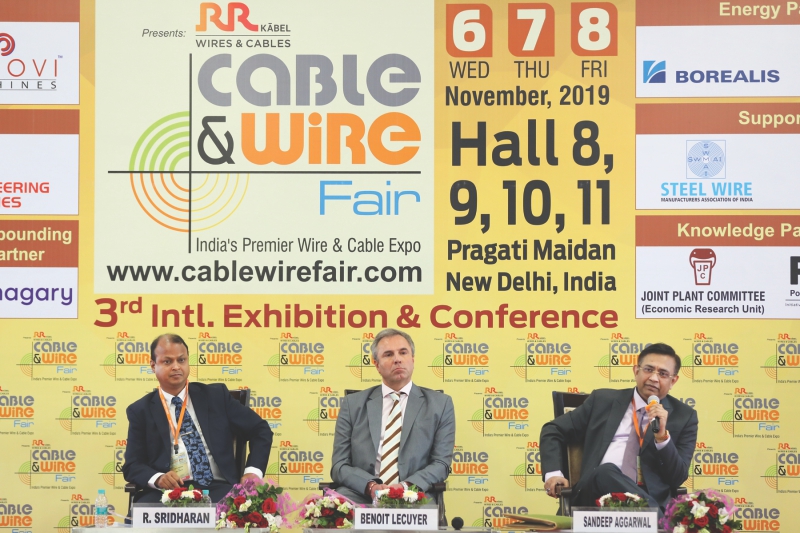 Speaking on the topic “Prysmian Innovation and Smart Solutions Along with the Outlook on Global Wire and Cable Market vis-à-vis India”, Benoit Lecuyer, CEO, Prysmian India, said, “Prysmian Group has made a significant step in advancing cable technology to enable more efficient, reliable and eco-friendly power transmission over long distances. The Group has developed and tested its new P-Laser cable system for high-voltage direct current (HVDC) applications. P-Laser is the first 100 percent recyclable eco-friendly high-performance cable technology, utilizing a ‘zero-gas’ process which reduces CO2 emissions by (up to) 30 percent. P-Laser is fully compatible with existing HVDC cables and accessories and has over 30,000 km manufacturing experience in other types of power cable networks. The P-Laser qualified cable system employs a material developed by Prysmian called High Performance Thermoplastic Elastomer (HPTE) with characteristics such as increased thermal performance, higher intrinsic reliability and greater productivity, making it the best solution for HVDC transmission lines at the highest voltage levels.
Speaking on the topic “Prysmian Innovation and Smart Solutions Along with the Outlook on Global Wire and Cable Market vis-à-vis India”, Benoit Lecuyer, CEO, Prysmian India, said, “Prysmian Group has made a significant step in advancing cable technology to enable more efficient, reliable and eco-friendly power transmission over long distances. The Group has developed and tested its new P-Laser cable system for high-voltage direct current (HVDC) applications. P-Laser is the first 100 percent recyclable eco-friendly high-performance cable technology, utilizing a ‘zero-gas’ process which reduces CO2 emissions by (up to) 30 percent. P-Laser is fully compatible with existing HVDC cables and accessories and has over 30,000 km manufacturing experience in other types of power cable networks. The P-Laser qualified cable system employs a material developed by Prysmian called High Performance Thermoplastic Elastomer (HPTE) with characteristics such as increased thermal performance, higher intrinsic reliability and greater productivity, making it the best solution for HVDC transmission lines at the highest voltage levels.
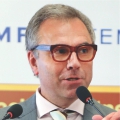
“A key feature of this new insulation technology is that, compared to XLPE, it does not require a chemical reaction during manufacturing to achieve the material properties required for the long-term electrical integrity of HVDC insulation systems. This feature gives the additional benefit of a shorter production time and results in reduced energy consumption and lower greenhouse gas emissions. P-Laser technology is fully compatible with existing cable and accessory technologies and provides a better electrical performance and higher reliability than conventional XLPE-insulated cables.
“India, which has an installed onshore wind capacity of about 35GW, has been working on executing the idea of building offshore wind farms to expand its wind energy portfolio. According to the government’s National Offshore Wind Energy Policy, Gujarat’s coastline has the potential to generate around 106GW of offshore wind energy. The implementation of this policy will create a huge demand for submarine cables. Taking note of this policy, Prysmian has developed non-metallic armored cables, whose armor has been designed with a high-performance composite material based on high modulus synthetic fibers. This innovative product featuring a synthetic armor is 40 percent lighter and enables ultra-deep installations reaching up to 3000 meters.
“To execute these ultra-deep installations, advanced cable laying vessels are required. Prysmian already has specialized cable-laying vessels in operation (Giulio Verne, Cable Enterprise and Ulisse). The group now has a fourth vessel called Leonardo da Vinci which will reinforce the fleet by Q2 2021.
India, which has an installed onshore wind capacity of about 35GW, has been working on executing the idea of building offshore wind farms to expand its wind energy portfolio.
“In addition, Prysmian has developed a complete portfolio of superior nuclear cables for systems and components involved in the production of nuclear energy, including, medium-voltage, instrumentation, control, communication, fiber optic and cables for special radiation-monitoring equipment. In addition, Prysmian has developed special cables for cranes and material-handling equipment. Prysmian has also come up with Alesea, an IoT solution that provides virtual assistance for cable drum management. Another innovation developed by Prysmian Electronics is PRY-CAM, which offers a revolutionary technology for partial discharge measurement. The acronym CAM does not only identify the Camera but also stands for Condition Assessment and Asset Management.
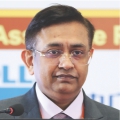
It is not just the railway sector that needs investment. The telecom industry requires investments worth USD 100 billion in the next 4 to 5 years to make 4G available to 99 percent of the Indian population.
Speaking on the topic titled “Current Scenario of the Telecom and Railways Sectors in India and What Are the Basic Growth Drivers? Key Issues and Challenges and What Are the Industry Expectations from the Government?” Sandeep Aggarwal, Managing Director, Paramount Communications Limited, said, “Cables play a vital role in the telecom and railway sectors. USD 58 billion was invested in the railway sector during 2013 to 2017. This investment is slated to go up to USD 124 billion during 2018 to 2022. The railway sector has gone for lease financing of its rolling stock assets, which allows it to secure Rs. 25,000 crores every year on a very nominal rate of interest.
“Even after increasing it capacity by around 50 percent in the last two to three years, the Indian railway cable manufacturing sector has not been able to meet the growing demand for cables. India requires an investment worth around Rs. 50 lakh crore in the railway sector by 2030. But the government is currently spending 1.25 lakh crore. We therefore need to increase investment in the railway sector at the rate of at least 20-25 percent to meet the growing requirements of the Indian railways. The government has the funds to invest in the projects; however, it is the industry that needs to be prepared for it. The problem here is not with the manufacturers or Engineering, Procurement, Construction (EPC) players. There are people who can manufacture the goods, set up the infrastructure and deliver the products, but the problem is securing the funds. The industry today is not getting funds from the banks. The banks have been squeezing the industry for credit. Since many EPC players have failed in the past, the banks today are really not ready to fund them adequately.
“It is not just the railway sector that needs investment. The telecom industry requires investments worth USD 100 billion in the next 4 to 5 years to make 4G available to 99 percent of the Indian population. The challenge here is investment in the production of optical fiber cables. As part of the roll-out, India is aiming to increase its fiber backbone to 2 billion kilometers in the next five years, so that its fiber optic density is on a par with that of China. China’s current installed fiber optic capacity is eight times that of India’s total capacity. However, India has a huge capacity to manufacture optical fiber cables. But again funding is the main issue. India needs to invest heavily in optical fiber cables. It needs to put in about 10 lakh kilometers of cables every year. The truth is that we have installed not more than 3 lakh kilometers of cables in 1 year.”
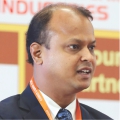
Industries like aerospace, civil aviation, e-commerce, power transmission, infrastructure, railways, oil and gas, telecom, and metros are some of the key growth drivers for the cable industry.
R. Sridharan, CEO, Birla Cable Limited, spoke on the topic “Key Drivers to be Considered for Investment and Expansion to go on to the Next Level and What Strategies to Opt for Sustainable Development for Cable Companies”. While addressing the gathering, he said, “Industries like aerospace, civil aviation, e-commerce, power transmission, infrastructure, railways, oil and gas, telecom, and metros are some of the key growth drivers for the cable industry. Around INR 83,000 crores has been allocated to the road sector and around INR 19,000 crores to the Pradhan Mantri Gram Sadak Yojana for rural road development. The government plans to build 19.5 million homes during the FY 2019 to FY 2022. Around 15.4 million houses have been constructed in the past five years. The government has also allocated INR 68,000 crores to the railways, with special focus on the Private and Public Players (PPP) model in railway and metro-rail infrastructures. Also, an amount of INR 75,000 crores has been allocated to PM Kisan Samman Nidhi, which would help in establishing around 10,000 farmer-producer groups with focus on improving agricultural productivity. This initiative would propel demand for optical fiber cables to initiate the Internet and digital services in the agricultural sector. MGNREGA, which is the largest work guarantee programme in the world, has been allocated INR 60,000 crores to push skill development and jobs in various sectors, including the wire and cable industry. As these investments will take place in the coming five years, we are expecting the industry to grow at an impressive rate.
“The Government of India has initiated the Pradhan Mantri Gram Sadak Yojana to push the development of industrial corridors and dedicated freight corridors. Such projects would require thousands of kilometers of optical fiber cables, power cables and transmission lines. Under the Bharatmala Project, construction or upgradation of about 35,000 kilometers of national highways is to be undertaken by 2022. In addition, under the Sagarmala Project, a network of roads is being constructed in coastal areas and areas adjoining ports. Along with the highways, the government is also working extensively in areas such as the railways, airways and inland waterways. Under the Ude Desh ka Aam Naagrik (UDAN) scheme, air connectivity to smaller towns is being expanded rapidly. The Jal Marg Vikas project for capacity augmentation of navigation on national waterways is aimed at smoothening internal trade carried through inland water transport. These initiatives will improve logistics tremendously, and would require installation of different forms of cables for power transmission, Internet connectivity, etc.
“Moreover, four times increase in next four years estimated in the cargo volume on Ganga (Inland Waterways) and an investment of INR 50 lakh crores in railway infrastructure during 2018 to 2030 are sure to push the demand for wires and cables in the coming years. The restructuring of national highway programme to ensure setting up national highway grid and ”One Nation, One Grid, Power to All” initiative along with Ujjwala Yojana and Saubhagya Yojana are giving a huge push to the investment for the wire and cable industry. The expected 5G rollout and increasing number of Internet subscribers would give a huge push to the installation of optical fiber cables across the country.”
November 6, 2019 – Cable Conclave: Session 2
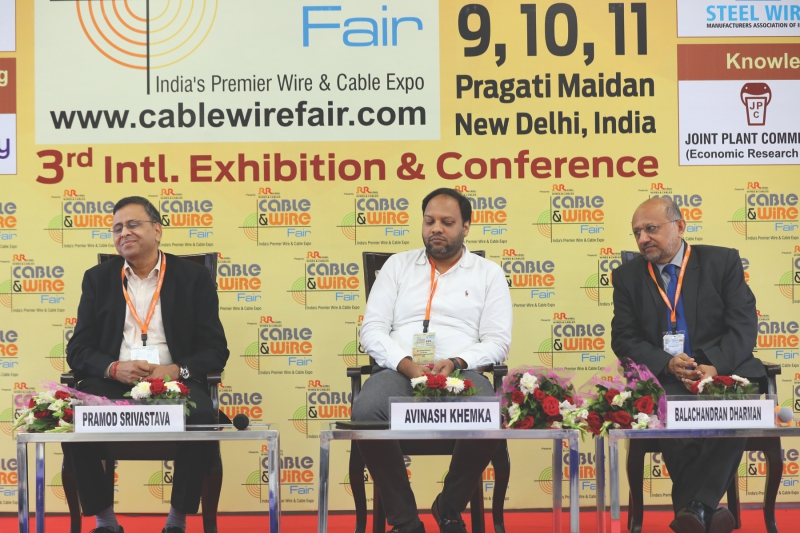 At the conclave, Balachandran Dharman, Director, RR Global Limited, spoke about the key aspects of becoming a global player in the cable sector. He made a reference to the significance of the global market and his company’s belief in achieving set targets to become a global player.
At the conclave, Balachandran Dharman, Director, RR Global Limited, spoke about the key aspects of becoming a global player in the cable sector. He made a reference to the significance of the global market and his company’s belief in achieving set targets to become a global player.
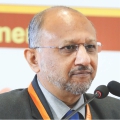
Companies must focus on creating the right systems, adopting global standards and practices, ensuring clear competitive advantages and scaling up all the facets of the company.
He said that technology is no longer a differentiator. However, it does give organizations a platform to start on. He pointed out that companies must focus on creating the right systems, adopting global standards and practices, ensuring clear competitive advantages and scaling up all the facets of the company. He said, “These four cornerstones are fairly relevant to all products and services. Companies must also focus on meeting the client’s needs in terms of shorter lead times, extended credit, price and superior service levels.”
He also emphasized on the factors that should be kept in mind while developing a company’s manufacturing plan. If the product range is wide, then companies should plan for lean and modular manufacturing. The companies would also require minimum downtime for an extended product basket and better arrangements for sourcing and logistics. Companies also need to focus on their techno commercial team and high service levels to ensure good reputation and productive business relations with clients.

India is the second fastest growing individual market for copper with a growth rate of 5.3 percent in the last decade (behind China with 7.8 percent). India’s copper share in cables is 8.4 percent as against 50.6 percent of the global average.
Avinash Khemka, Chief Manager, International Copper Association India, spoke about the outlook on the copper industry in relation to demand, supply and market opportunities. He said, “According to International Monetary Fund’s (IMF) World Economic Outlook July 2019, India continues to be the world’s fastest-growing economy, expected to expand at the rate of 7 percent in the fiscal year 2018-2019 and 7.2 percent in 2019-2020. China is expected to grow by 6.2 percent and 6 percent during the same period.
“The government is planning to make India a USD 5 trillion economy by 2025. It is focusing on boosting the manufacturing sector for the same. Policies like ‘Make in India’ and ‘Ease of Doing Business’ and investment in infrastructural development aim at putting India on the path to achieving this target. From the point of view of metal intensity, India is still in the initial phase of growth. India’s metal intensity is much smaller for copper, aluminum and steel. In the Indian sub-continent, in 2018, the demand for copper was 1,309 KT of which India’s demand was 1,065 KT. In the past 12 years, India’s demand for copper grew by 4.7 percent, which is second only to China’s growth of 6.9 percent during the same period. Even though, in terms of population, China and India are of the same size (18.8 percent is China’s share in world population; 17.7 percent is the share of India), the per capita use of copper is very low in India (0.76 kg/person) as compared to China (9.5 kg/person).
“If we break down the use of copper based on its end-use application, the electrical sector contributes 52 percent to the total demand. That is followed by transportation (10 percent), consumer durables and general engineering. Wires and cables accounted for 48 percent of the total demand for electrical products in FY18. India is the second fastest growing individual market for copper with a growth rate of 5.3 percent in the last decade (behind China with 7.8 percent). India’s copper share in cables is 8.4 percent as against 50.6 percent of the global average. However, the growing demand from the power sector with the government laying thrust on renewable energy and increasing demand from the households for consumer durables will add to the demand for copper in India. Manufacturers of hybrid and electric cars will also push the consumption of copper, as electric vehicles use four times more copper than traditional internal combustion engines.”
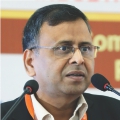
There has been a significant reduction in investment by the major telecom operators in India. The falling Average Revenue Per User (ARPU), increasing debt, delay in 5G technology and significantly high spectrum cost are major obstacles to investment made by telecom operators.
Speaking on the occasion, Pramod Srivastava, ED, Optical Fiber & Cable Business, Aksh Optifibre Limited, said, “India has more than 1 billion active mobile users, of which half a billion users have access to data connectivity. Almost 100 million kilometers of optical fiber has been installed in the country compared to over a billion kilometers of fiber laid in China and close to half a billion kilometers of fiber installed underground in the USA. India has more than 5,000 telecom towers, of which 20 percent are connected with optical fiber. In China, 80 percent of telecom towers are connected with optical fiber.
“There has been a significant reduction in investment by the major telecom operators in India. The falling Average Revenue Per User (ARPU), increasing debt, delay in 5G technology and significantly high spectrum cost are major obstacles to investment made by telecom operators. The other major factors affecting investments in the telecom sector are slow governmental investment and delayed national broadband project – BharatNet and Smart City projects. Also, there has been significant consolidation in the telecom industry with reduction in the number of private telecom operators – from 12 to 3.
“India still has a significantly high potential for fiber penetration. Estimates suggest that 12 to 15 billion new devices need to be connected in the next three years globally. The Government of India needs to make investments in the telecom sector, especially in its flagship BharatNet project. The rollout of Bharatnet Phase 2 needs to take priority, and Phase 3 needs to be started with State-Center collaboration to bring data connectivity on deployment. The Right of Way (RoW) approval needs to be simplified to use land for laying optical fiber cables. Also, a separate city optical fiber network should be a mandatory requirement for smart city rollouts. Private telecom operators need to start making investments in building an OFC network. If the telecom sector wants to invest in the OFC, it needs to address the liquidity issue on priority, cost of RoW needs to be looked into for significant reduction, and speed-up tower fiberzation and FTTx build-out needs to be simplified with several innovative and cost-effective solutions for faster deployment.”
November 6, 2019 – Technical Session 1
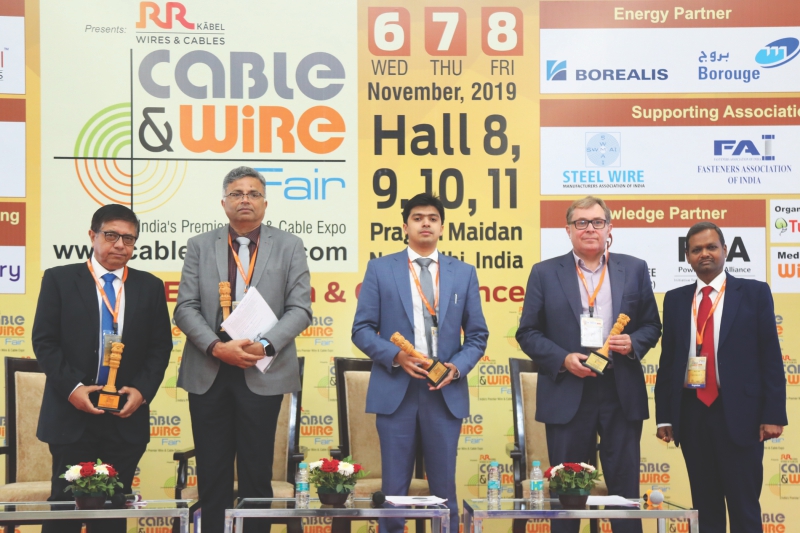 Speaking on the topic “Solutions for Insulation and Sheathing for Submarine and Compact Land Cables”, Tapas Dey, Technical Service Manager, Borouge, said, “HVDC submarine and underground cables have been in huge demand in China, but the market is still catching up in India. Borouge & Borealis has been supplying high-voltage and medium-voltage compound for the last 45 years; and for more than 15 years, it has been in the business of HVDC compounds.
Speaking on the topic “Solutions for Insulation and Sheathing for Submarine and Compact Land Cables”, Tapas Dey, Technical Service Manager, Borouge, said, “HVDC submarine and underground cables have been in huge demand in China, but the market is still catching up in India. Borouge & Borealis has been supplying high-voltage and medium-voltage compound for the last 45 years; and for more than 15 years, it has been in the business of HVDC compounds.
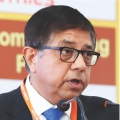
The submarine cable should be manufactured under strict quality standards. The quality of submarine cable is the ultimate requirement because if there is any fault in the subsea cable, the replacement cost is huge.
“Borealis developed its first HV and MV XLPE compound in 1970. After several innovations and product inclusions, the company, through its in-house innovation center, developed Supercure Next Gen XLPE compound in 2000. Moving forward, in 2010, the company added a new high-pressure reactor in Sweden and commissioned an HP LDPE & XLPE Plant in Ruwais, Abu Dhabi, in 2016. From 2018 onwards, the company started its commercial production for both HV XLPE LS4201H and LV VISICO LE4423 compounds in Ruwais.
“Borouge has the same compounding plant in Ruwais as Borealis in Sweden. It includes dedicated W&C HP PE & XLPE manufacturing plants with high pressure LDPE reactor based on LD5 in Sweden, rated at 350kt/annum.
“Borouge & Borealis has invested more than USD 1 billion in Abu Dhabi and Sweden for research and development purposes. As a result, the company came up with an industry leading Low Scorch technology platform that forms the backbone of XLPE products. Also, a state-of-the-art high pressure LDPE technology was deployed at both sites to deliver Borlink™ XLPE solutions to the industry.
“The submarine cable should be manufactured under strict quality standards. The quality of submarine cable is the ultimate requirement because if there is any fault in the subsea cable, the replacement cost is huge. It is required for the manufacturers to make sure that high quality material is used with clean insulation and smooth semicons. There should be no methane left, and the by-product should be removed. Another requirement for submarine cable is the longer length. The longer the cable is, the fewer joints are required, hence reducing the risk of failure. BorlinkTM Supercure LS4201 compound addresses all the aforementioned requirements for submarine cable. The BorlinkTM Supercure LS4201 compound cable is known for longer running time (up to 50 percent longer) with fewer joints. It has shorter degassing time, up to 30 percent shorter.
“Compact cables lead to reduced trench width with lower overall construction costs. The design of the compact cable dissipates the heat generated on load more effectively. The compact land cables have longer drums lengths, reduced number of joint bays and accessories contributing significantly to reduced system costs.
“Some of the advantages of compact cable design to the value chain are reduction of raw materials for cable insulation and protection, ease of cable installation (smaller trenches, advantage in urban environments), and maximizing transportation length of cables to allow reduction of cable drums and cable joints.
“Cable jacket is an essential component of power cable systems. It has a significant impact potential on the total cost of cable systems. A limited number of compounding material is being mixed in polyethylene but the number of compounding material increases when mixed in PVC.
“PE gives excellent mechanical and chemical protection. It is best-known for surface hardness, better abrasion resistance, moisture barrier, cold temperature endurance, excellent ESCR and weather resistance, good chemical resistance and better heat deformation allowing cables to operate in elevated temperatures. PE is an environmental-friendly material and does not include halogen, plasticizer, and metal stabilizers like lead and cadmium. The use of LS4201 compounding material when mixed with PE leads to reduction of installation costs, increased reliability and lifetime of cable systems, and minimized risks of environmental impact.”
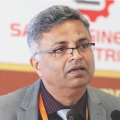
The fire performance of cables is classified based on a number of criteria that includes flame spread, heat release rate, total heat release, smoke production rate, total smoke production, fire growth rate index, flaming droplets or particles and acidity of gases evolved.
Sushil Kumar Rajan, Technology Director, Fluor & Compounds, Alphagary, spoke on the topic “Solutions to Fire Protection Standards in the Global Wire and Cable Industry”. He said, “The company re-organized itself from Mexichem to Orbia. The polymer solutions are served by Vestolite, which is a global brand in PVC, and Alphagary, which is a specialty compound wing. Alphagary is part of Orbi. Low Smoke halogen-free wire was pioneered by Alphagary.
“Standards for flame retardancy and fire resistance in cables are being adopted the world over in a slow but steady manner. IEC60332-1 defines the test method for defining the flame propagation characteristics of a single wire or cable. IEC60332-3C describes the test method establishing fire propagation of bunched cables or bunched single wires.
“The UL standards are universal in USA and are used for Construction Material Plenum rating, which is the most severe and stringent test requirement of fire performance testing. Plenum-rated cables meet the NFPA -262 FT6 standards.
“The CM and CMG general purpose cables undergo vertical flame test to meet UL 1581 standards. The CMX restricted cables are tested under vertical wire flame test to meet UL1581 Limited-use standard. There IS 17048–2018 for Halogen Free Flame Retardant Cables (HFFR) for working voltages up to and including 1100V.
“Let us now look at the IEC60331 Fire Resistance Test. The temperature on the cable is between 750℃ and 800℃. After 3 hours, the fire and the power is switched off. Twelve hours later, the cable sample is re-energized and must maintain its circuit integrity. BS 6387 Fire Resistance Test, which is more stringent than IEC 60331, specifies the performance requirements for cables required to maintain circuit integrity under fire conditions.
“The terminology commonly used in the cable industry includes terms such as Flame Retardant, Low Smoke, Low smoke Zero Halogen, Low Smoke Fume (LSF) and Fire Resistant Cables, which are commonly known as Fire Survival Cables. Fire retardant cables are designed for use in fire situations where the spread of flames along a cable route needs to be retarded. Fire resistant cables are designed to maintain circuit integrity of those vital emergency services during the fire. The low halogen content and low corrosivity of Low Smoke Fume (LSF) cables lies somewhat in between that of fire-retardant cables and LSZH cables. The LSF cables are usually manufactured from flame retardant PVC blended with HCL additive and smoke absorbent. The Low Smoke & Halogen Free & Fire Retardant (LSZH) cables are not only characterized by fire retardant performance but also by the halogen-free properties, thus offering low corrosivity and toxicity. During a fire, the LSZH cables will emit less smoke and acid gases which may affect human health and damage expensive communication equipment. While several tests are available to test the compound, it must be noted that all tests have to be passed by the finished cable and not by the compound only. Some of the tests are simple enough to be conducted in an experimental laboratory, and some of the large scale fire tests and smoke tests are so difficult to organize that they can be exasperating and require a lot of sustained efforts.
“The fire performance of cables is classified based on a number of criteria that includes flame spread, heat release rate, total heat release, smoke production rate, total smoke production, fire growth rate index, flaming droplets or particles and acidity of gases evolved.
“Alphagary has a range of customer solutions that include LSHF (Low Smoke Halogen Free) compounds, Flame Retardant PVC, Low Smoke Plenum, Thermoplastic Elastomer, Polyvinyl Chloride, Thermoplastic Elastomer Vulcanizate, Thermoplastic Elastomer Urethane, Thermoplastic Elastomer Olefin, Chlorinated Polyethylene and Flame Retardant Polypropylene compounds. All these compounds are categorized by brand names like MEGOLON, SMOKEGUARD, EVOPRENE, GARATHANE, GARAFLEX, ALPHASEAL and MICRAFLO. The company also offer lead free calcium zinc stabilizer under the brand name VINASTAB apart from a variety of plasticizers and color concentrates.
“The company also provides solutions for power and energy cable sector. There is a general purpose compound with high processing speeds with Limiting Oxygen Index (LOI) of 34 percent. The company has offerings for data and telecom cables that include thermoplastic, halogen free, fire retardant compound and S-rated compounds that are suitable for jacketing and sheathing. There are compounds that are used in microducts and tight buffer. The specialty compounds include radiation and oil resistant grades. There are compounds suited for E-beam cross-linking. There are stress crack resistance compounds that are known for excellent ESCR performance and suitable for harsh environments.”

There are two solutions to keep wires and cables safe – one is using the toxic chemicals to eliminate the rodents and the other is use of non-toxic solutions. Keeping the latter in mind, Lifeline Technologies has developed ecologically safe and non-toxic products to protect wires and cables from rodents.
Karan Shah, Director-Marketing & Business Development, Lifeline Technologies, spoke about the solutions developed for the wire and cable industry. He said, “Apart from fire hazards that affect wires and cables, which in turn cause damages to property and lives, there are external factors like rodents and termites that affect wires and cables.
“Around 40 percent of all mammal species are rodents and are characterized by two continuously growing incisors which must be kept short by gnawing. The plasticizers and aromatic odors, bright colors and texture of polymer products attract rodents. The damages caused in energy cables, data cables and automotive cables lead to short circuit, fire and loss of property and life.
“There are two solutions to keep wires and cables safe – one is using the toxic chemicals to eliminate the rodents and the other is use of non-toxic solutions. Keeping the latter in mind, Lifeline Technologies has developed ecologically safe and non-toxic products to protect wires and cables from rodents.
“The principle of formation covers repelling ingredients effective at very low concentration and controlled release rates of actives, which ensures long life for cables. Lifeline Technologies has developed additives that are encapsulated into micro porous polymer and controlled release mechanism of additives to provide long life for cables. There is a dual mechanism of action – one is odor emitting chemicals that keeps the rodents away from the cables and other is obnoxious organoleptic influence, which is very strong with spicy taste. If the rodents cannot be repelled by the odor, they can be repelled by the taste. The solution from Lifeline Technologies is based on a combination of odoriferous and organoleptic repelling additives. It has low leachability and low controlled evaporation rate of chemicals. It is effective at a very low level depending on thickness and sheathing. The additives are compatible with a variety of polymers and do not cause any change in the physical, chemical or mechanical properties of the polymers. The product is approved by the accredited third party lab and has been developed keeping in mind RoHS-compliant and toxicity data.
“There are two test methods devised by third party labs to ascertain the specialty additives work – choice test and no choice test. In the choice test, the rodents are kept in a cage for 30 days with food and water along with cable samples manufactured using anti-rodent master batch. The rodents are observed for the gnawing factor, which is the amount of time the rodent actually chews on to the cable. This helps the lab in analyzing whether the cable is rodent resistant or repellent or not. In the no choice test, the rodents are kept in a cage with no food along with cable samples manufactured using anti-rodent master batch for 7 days. Only water is provided after four days. The gnawing factors on the cable determine the effectiveness of the additives.
“The company also offers termite-repellent additives. The additives are based on micro-porous polymer base filled with mixture of odor emitting chemicals and very bitter compounds. It dissuades ant and termites from attacking polymers. Then there is a squirrel-repellent additive developed for aerial cables. There are also combination batches that combine different additives like rodent-repellent, termite-repellent and UV additives into a single combi batch.”

The masterbatch offered by Delta-Tecnic is known for excellent dispersion of pigments and can be produced using the same masterbatch base polymer as used in the cable.
Speaking on the topic “Color Masterbach for Cables and PVC”, Manuel Miret, Area Manager and New Product Developer, Delta-Tecnic, said, “Delta-Tecnic is a leading masterbatch producer with its Deltacolor Masterbatch division focused on the cable industry worldwide. The major industrial sub-sector includes automotive, telecom, energy, data, building wire and industrial and special cables.
“The masterbatch offered by Delta-Tecnic is known for excellent dispersion of pigments and can be produced using the same masterbatch base polymer as used in the cable. The company ensures the right selection of pigments to avoid affecting the dielectric properties of the cable guaranteeing the lightfastness of the color of the cables. The masterbatch are REACH- and RoHS-compliant. The masterbatch is produced using different polymers like PVC, PBT, PE, XLPE, TPR, TPU, etc.
“The company offers PVC masterbatch, XLPE Masterbatch Ambient Curing, EVA/PE Masterbatch and XLPE & PVC Masterbatch for energy cables. The optical fiber cables segment includes PBT Masterbatch, TPE-E Masterbatch, PE/EVA/PVC Masterbatch (Jacketing/outdoor). Colors and additives are also developed for copper data cables. The colors and additives for automotive cables include PVC Masterbatch and EVA/PE & XLPE Masterbatch.”
November 7, 2019 – Wire Conclave 1

The wire and cable industry must collaboratively work to root out the inefficiencies that had been hindering the growth of the industry.
While addressing the gathering as moderator for Wire Conclave 1, Nirmal Singh, Director, Assomac Machines Limited, shared his views on the wire industry, current state of the economy and future business ecosystem for the country. He emphasized on the use of new technologies and innovations in the wire industry to meet the set milestones of achieving 300 million tonnes per annum of production capacity by 2030. He also said that the wire and cable industry must collaboratively work to root out the inefficiencies that had been hindering the growth of the industry.

The steel wire market has become more or less customer-centric, where customers are making purchases on their terms. The question is for how long will the steel wire industry expediently accept businesses that are lower than what is desirable?
At the conclave, Dilip Dev, CMD, H.D. Wires Private Limited, and Chairman, SWMAI, said, “The worldwide consumption of steel wire has increased, but the consumption of steel wire in India has decreased. The demand for steel wires has decreased. Around nine months ago, there was a shortage of raw materials in the country. Today, there is no dearth of raw materials. It is the demand for steel wires that has taken a hit. The steel wire market has become more or less customer-centric, where customers are making purchases on their terms. The question is for how long will the steel wire industry expediently accept businesses that are lower than what is desirable?
“The lack of availability of skilled workers in India also poses a challenge. The industry needs to organize training programmes from time to time to meet the requirements for skilled workers. Another challenge for the industry is taxation. GST does not cover most of the things that should have been included. The tax imposed on the steel wire industry should be curbed.”

India has been a self- consuming economy, and the target of 300 million tonnes per annum by 2030-31 is quite achievable. However, liquidity poses a big challenge to the steel wire industry. The banking sector has put everything on the back foot.
While delivering his speech at the conclave, Dheeraj Dev, Director, H.D. Wires Private Limited, shared his views on the Indian economy and India’s economic slowdown. He said, “At 51.3 percent, China is the world’s largest producer of steel. With a total contribution of 5.9 percent, India has overtaken Japan to become the second largest producer of steel with 130 million tonnes per annum. Production of steel has kept pace with its global use. India has been a self-consuming economy, and the target of 300 million tonnes per annum by 2030–31 is quite achievable. However, liquidity poses a big challenge to the steel wire industry. The banking sector has put everything on the back foot.
“In addition, the Indian steel industry is characterized by fragmentation, particularly in the downstream segment, with a large number of unorganized players. As reported by CRISIL, more than 50 percent of steel wire companies are unorganized. These companies are a threat to the existence of the organized steel wire industry. Pricing is another factor that has affected the steel wire industry. The interest cost for industries in India is the highest in the world, which is not sustainable. Also, government policies are not pro-employer; they benefit the employees more.”

Is the system efficient enough to allow the industry to adapt to automation and artificial intelligence, or is the gap too big to cover? Will the products that the wire industry has been manufacturing be in demand in future? These are the questions that industry players need to ask.
Speaking on the occasion, Siddharth Agrawal, Director, Systematic Industries Limited, and Member, Executive Committee, SWMAI, said, “Is the wire industry changing with the same speed as the other industries across the world? What has been the rate of innovation in the wire industry in the last five years? Has the industry come up with new innovative ways or has it just been sticking with the old ways? Is the system efficient enough to allow the industry to adapt to automation and artificial intelligence, or is the gap too big to cover? Will the products that the wire industry has been manufacturing be in demand in future? These are the questions that industry players need to ask.
“We are all familiar with the galvanized wire. It is used in agriculture for supporting crops. New-age farmers have started using stainless steel wires for this purpose, as the shelf life is longer. Again, in the transmission industry, there are products called ACSR core wires. With line prices increasing, the need is to transmit more electricity through the same cable. This has led to the development of wires like OPGW, high nickel chromium, etc.
“The industry must come together, collaborate and innovate to develop new products.”

Industries in India must use the cross-pollination technique so that more and more new entrepreneurs can join the industry with their innovative ideas and competitive approaches.
Speaking on the importance of the wire and cable industry, A Din Pangotra, CEO of the upcoming National Portal IHUNTBEST and Chief Mentor of NEDC, said, “The wire industry plays a vital role in various industries, such as automobile and aerospace. Wires and cables are used for the purpose of safety and security. Without wires and cables, we cannot have a well-secured infrastructure.
“India is a trade-deficit economy. An emerging industrial segment like the wire industry can turn India into a trade-enabled nation. The country is currently a trend beneficiary rather than a trend setter. We are buying more and selling less; and this practice needs to be changed.
“Industries in India must use the cross-pollination technique so that more and more new entrepreneurs can join the industry with their innovative ideas and competitive approaches. The culture of cross pollination is the need of the hour. Also, to grow, the wire and cable industry must go for standardization.”
November 7, 2019 – Wire Conclave 2
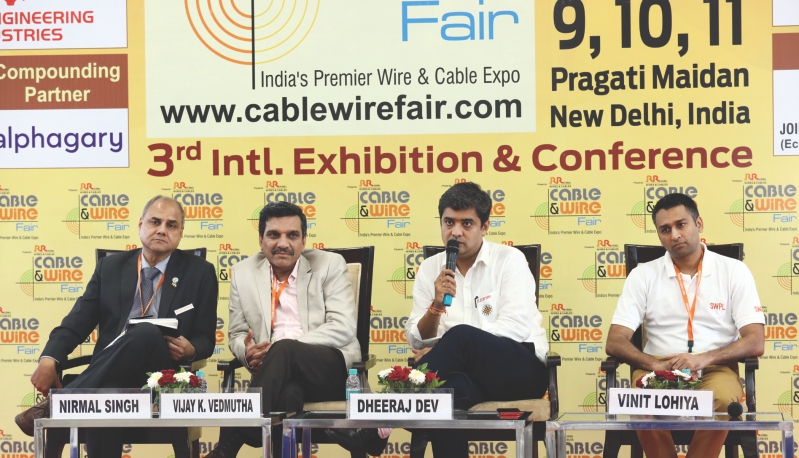 Speaking during Wire Conclave 2, Vijay K. Vedmutha, Managing Director, Bedmutha Industries Limited, said, “Steel wire industry is a small community within the country. During the last 10 years, the industry has seen a lot of technological upgradation. Huge capacities have been created in the industry because of demand and capacity and speed of the machines that are being used today.
Speaking during Wire Conclave 2, Vijay K. Vedmutha, Managing Director, Bedmutha Industries Limited, said, “Steel wire industry is a small community within the country. During the last 10 years, the industry has seen a lot of technological upgradation. Huge capacities have been created in the industry because of demand and capacity and speed of the machines that are being used today.
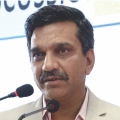
The wire industry is currently passing through a lean phase because of weak demand. This weak demand can be attributed to the slowdown in the automobile industry and the absence of expansion in the country.
“However, the wire industry is currently passing through a lean phase because of weak demand. This weak demand can be attributed to the slowdown in the automobile industry and the absence of expansion in the country. The government of India has recently taken a decision not to participate in RCEP. Industries in India, including the wire and cable industry, will derive substantial benefit from this decision. Fortunately, the government is also looking forward to reviewing the FTA agreement.
“I think revival of the industry would start between February 2020 and June 2020. Demand would start increasing, and the new economic environment would push the growth of the industry. Four or five years ago procurement of raw materials posed an acute problem for the industry. The supply of raw materials in the country is now quite satisfactory. The quality of the raw materials has also improved. At the same time, new capacities are coming up. Also, the old capacities that had been cut down will be revived on the back of positive financial restructuring. With high-quality wire rods and the new technology in the country, we have to find ways and means of expanding our market both domestically and internationally. The lean phase we are going through at the moment has compelled us to invest our time and energy in removing the inefficiencies within the industry. Wire and cable companies have to look into how they can be internationally competitive and how they can expand their market – both domestic and international. Good times will start rolling soon.”
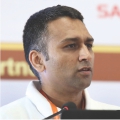
The end-of-life-vehicle policy developed by the government is a move in the direction. Vehicles that are 15 or more than 15 years old will be scrapped immediately. This will improve the availability of scrap to the steel industry. India is still a net importer of scrap.
Speaking on the occasion, Vinit Lohiya, Director, Samrat Wires Private Limited, said, “It is true that the wire industry – and the overall steel industry – and the auto sector are going through a slowdown in growth. Hence, this is the right time to clean our house. Last year, when things were looking up, we put in a lot of manpower because we did not want to miss the bus. Today’s slowdown gives an opportunity to remove the additional cost we incurred last year. This exercise will enable us to make the most of the good times that lie ahead.
“The end-of-life-vehicle policy developed by the government is a move in the direction. Vehicles that are 15 or more than 15 years old will be scrapped immediately. This will improve the availability of scrap to the steel industry. India is still a net importer of scrap. Once this policy is adopted, the auto sector will revive, because the old vehicles will go off the road, and the supply of scrap would improve substantially.
“I think it is good time right now, when the prices are low, to invest in automation of plants, because the wire industry is predominantly a low value-added industry – 75 to 80 percent is raw material cost. So, it is very important that we automate a lot of things so that the labor cost is low and we continue marching forward during bad times.”

For us quality matters. We as an industry make products like bead wires, spring steel wire and cable armor etc. These are precise products, which require lot of expertise and overall efficiency.
Speaking during the conclave, Dheeraj Dev, Director, H. D. Wires Private Limited, said, “Quality poses a big challenge to the wire and cable industry. Quality checks are required at various governmental levels, be it discoms, the defense or the railways. This is the need of the hour. We are welcoming multinationals. Multinational companies give quality products. When they will see that poor-quality products can be pushed in the country, they will be disappointed. They want to make investments in India. So, they are getting high-quality technologies and machines. They obviously assume that the government departments are also buying quality products. We are also investing because we think that Indian market has changed and that the government is more quality conscious. There have been instances where the electricity boards have blacklisted some parties. Some movement in this direction has taken place. IAS officers have come on their seats. They have rejected cables; they have rejected conductors. But that has not been done at all levels. If you look at the Madhya Pradesh Electricity Board, you will find that they are happy with whatever metal they are getting. So this is the basic problem with investments in quality machines and the innovation we are doing. You realize that you are competing with someone who is still running on traditional machines in a traditional way and giving poor-quality products; and you have all those huge overheads. The interest cost per se in the rod industry is Rs 6 or 7 per kilogram. Even in the wire industry, it is not less than Rs 3 or 4 a kilogram. These high interest costs are because of high-speed machines – the latest technology that we have employed. So, we have to cover the additional Rs 4 a kilogram additional over a competitor who has a slow-speed machine and who is playing with the quality of the product. So, the engineering good category is a must for the wire industry; we cannot be in the steel sector. If we really want to come out of the whole mess-up, we have to make a precise product; we have to look at the carbon of the rod; we have to look at the manganese; we have to look at the drawability; we have to look at our labs and R&D departments. We cannot be like the steel sector that just has to do melting, make the product and sell it on the market. For us quality matters.We as an industry make products like bead wires, spring steel wire and cable armor etc. These are precise products, which require lot of expertise and overall efficiency.”
November 7, 2019 – Technical Session 2
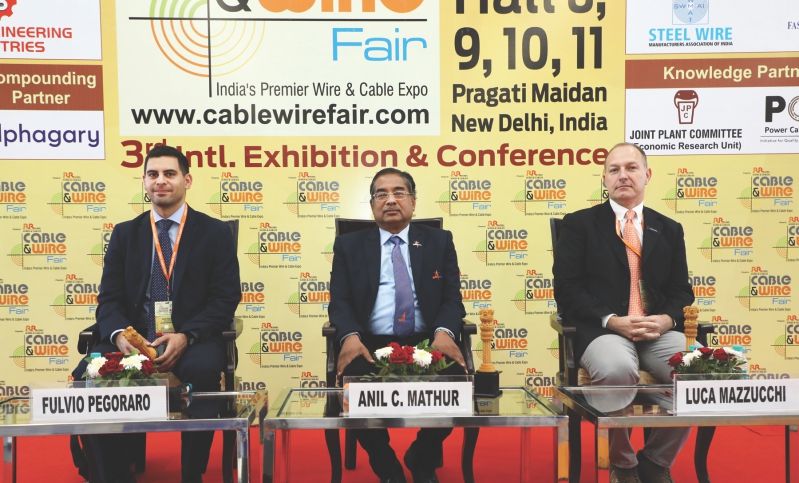 In Technical Session 2, Fulvio Pegoraro, R&D Director, Eurolls SRL, Italy, spoke on the topic, “The Cold Rolling Technology on High Strength Materials.” He said, “We are experts in the cold rolling process using cassettes. Since 1997, we have sold more than 10.000 cassettes worldwide. Our U.S.P. is based on the fact that our complete production process is in-house, starting from the engineering (calculation of the reductions and rolls profiles shapes according to different wire materials and customers’ different production processes) to the assembly of all cassettes components as well as rolls production. Among our services we offer the start-up and technical support on site. The types of cold rolled wires processed by Eurolls cassettes can be divided into three categories, namely smooth wire, ribbed wire and welding wire. Since 1998, we have sold more than 1.500 units all over the world.
In Technical Session 2, Fulvio Pegoraro, R&D Director, Eurolls SRL, Italy, spoke on the topic, “The Cold Rolling Technology on High Strength Materials.” He said, “We are experts in the cold rolling process using cassettes. Since 1997, we have sold more than 10.000 cassettes worldwide. Our U.S.P. is based on the fact that our complete production process is in-house, starting from the engineering (calculation of the reductions and rolls profiles shapes according to different wire materials and customers’ different production processes) to the assembly of all cassettes components as well as rolls production. Among our services we offer the start-up and technical support on site. The types of cold rolled wires processed by Eurolls cassettes can be divided into three categories, namely smooth wire, ribbed wire and welding wire. Since 1998, we have sold more than 1.500 units all over the world.
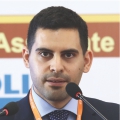
We usually split our cassettes in two groups: cassettes for reinforcement wire and cassettes for industrial wire. Mostly we work with low carbon wire and the cassettes used for this application are our CB & CA models.
“We usually split our cassettes in two groups: cassettes for reinforcement wire and cassettes for industrial wire. Mostly we work with low carbon wire and the cassettes used for this application are our CB & CA models. Most common application for this type of cassettes is on machines having one, two or more drafts to produce wires to be used as lattice girders, mesh, reinforced concrete applications. Our CASSETTE CL30CA33 is used for the production of smooth and ribbed low carbon wire, starting from a maximum inlet size of 18 mm and a minimum outlet size of 3 mm. The cassette mounts 3+3 rolls, the dimensions are 140/150X90X15-20 mm and it has radial and axial regulation. With each unit sold, we supply nuts necessary to process the axial regulation. Roll-holders can be supplied for this cassette as well. Since 1998, we have sold more than 1,000 units all over the world.
“Some examples of ribbings obtainable with our cassettes are KARI «A» STANDARD (Max. Reduction: 18-22%) and INDENTED WIRE (Max. Reduction: 10%). The accessories that we supply for cassette maintenance include Maintenance Bench Complete of Optical Device, Unscrewing Locknut Bench and Bearings Pre-loading Device.
“In the cassettes-for-industrial-wire category, Types C and D cassettes have been specifically studied to replace the traditional die in the industrial wire sector. The advantages of using cassettes instead of dies are increase of productivity and line production speed due to a reduction of down times and line stoppages (associated with the replacement of dies). This reduction of stoppages translates into an increase of production efficiency. Another advantage is reduction of wire breakages. The cold rolling process requires a lower pulling force compared to the die process; therefore, a lower friction results in less line stops. This lower friction between rolls and wire material guarantees an improved wire surface quality for some materials and, in general, a more homogeneous structure of the wire. The other advantages are longer roll life as compared to dies; less quantity of soap consumption especially for certain types of materials; and for materials like stainless steel and titanium, reduction of annealing steps because of a reduced tensile strength obtained on the wire if compared with dies and less furnace maintenance because of cleaner wire.
“Welding wire is the type of wire where the cassettes type C and D have been mostly used. Therefore, we have looked at it as a case study. There are three types of welding wire: Solid Wire (CO2 & Stainless steel), Flux Cored Wire (Butt, overlap and seamless, stainless steel and low carbon), and Flux Cored which is usually processed by Modular cassette CL20 D20, while solid wire is processed by Microcassette CL25 C133. The model CASSETTE CL25C133 mounts 3+3 rolls and is always supplied complete with roll-holders to grant the tighten ovality tolerances requested on finished products. The model CASSETTE CL20D20 mounts two rolls on each module up to a total of five modules connected to each other by screws to form a single unit. The available accessories are an optical device, a digital visualization system and a pre-loading device.
“The special materials rolled by Eurolls cassettes are mostly stainless steel, titanium and high carbon. Titanium has been rolled both by micro and modular cassettes, which can be equipped with carbide or special steel rolls. Stainless steel is usually rolled by microcassettes mounting carbide rolls. High carbon represents an increasing sector especially within the Asian market, and together with the CL40F33, we are developing a new unit, called «EHC95», especially studied to produce single wires for PC strand.
“We can also provide cassettes for special applications. One of them is the twisting cassette for the twisted square wire. This model mounts four rolls; the wire enters round and the cassette gives the final twisted shape. The required PITCH on the final product is the key information as to properly set up the cassette. With our cassettes we have processed other types of wires, such as shaped wire (e.g. 8-lobe profile) and flat wire, usually using our standard CB cassettes and special CL25CB20/22 models. The market is currently showing interest in rolling other materials like copper, brass and bronze – all these materials can be processed with our cassettes.
“The company’s latest developments include CASSETTE EHC95, CASSETTE CL20R20, and CASSETTE CL20C133. CASSETTE EHC95 is suitable for processing high carbon wire. CASSETTE CL20R20 is for mounting 2+2 rolls; it is supplied with a maximum of five modules – Rolls Ø 55 mm. It has been designed to replace the die in the final draft. CASSETTE CL20C133 is for mounting 3+3 rolls – especially studied to process very thin wires, down to 0.80 mm and different materials such as Titanium and Stainless Steel. It is suitable for machines with limited wire height entry (85 mm).
“Our CL25C133 4.0 SMART CASSETTE is equipped with sensors that can detect line production parameters and therefore predict anomalies that could eventually occur on rolls. The cassette’s control station can be connected directly to customer’s PLC. Alternatively, data collected from the cassette’s control station is sent to a Cloud and can be analyzed on remote by the customer and Eurolls technicians.
“We provide three packages for our customers, namely Temperature, Productivity and Maintenance. The Temperature Package includes cassettes temperature control and alarms, the Productivity Package includes production data and alarms, and the Maintenance Package includes production data and alarms. Direct control of line productivity leads to preventative maintenance.”

The drawing die is not just a piece of metal with a hole inside: it’s one of the main actors of the drawing process.
Speaking on the topic “The Benefits of Drawing with Pressure Dies Combined with Long Nib Dies”, Luca Mazzucchi, R&D – Materials Approval – Technology – Industrialization – Project Manager for Ceramics, Wires, and Steel Cords, said, “Giuseppe Vassena is the founder of Vassena. He started his business in 1958. He believed that the drawing die is not just a piece of metal with a hole inside: it’s one of the main actors of the drawing process. He began to work on customization and on the study of the different geometries needed at the various drawing stages to obtain a homogeneous constant drawing effect.
“During those days price was the first and main decisive factor. Now things have changed because new needs are arising – needs such as higher drawing speeds, better wire surface quality, poorer lubricants due to more stringent environmental rules and challenging materials. All these challenges highlight the importance of drawing dies.
“Process variables in wire drawing are die angle, reduction in cross sectional area per pass, drawing speed, temperature and lubrication all affect F, the drawing force. Vassena has been concentrating on the study of die angles in relationship with the section reduction.
“The geometry of a drawing die has to change according to drawn material, desired elongation, drawing speed, etc. In the drawing process, different forces come into play: the drawing force to apply against the tensile strength of the material determines friction. More friction means more die wear. Die wear mainly takes place in the reduction zone, where the incoming wire comes into contact with the die. It has disadvantages such as shorter die life, more machine stops caused by increased breaks, and higher management costs due to more die changes. Friction and die wear should be minimized. Dies with longer reduction cone having minor inclination are less exposed to friction and die wear. The solution we offer in this area is the drawing die called type L, where L stands for ‘long.’
“Let’s take a quick look at the Venturi effect: A fluid flowing through a constricted section of a tube undergoes a decrease in pressure. As the fluid flows through the constriction, the fluid molecules speed up. Now, how does this apply to drawing dies? As the fluid goes through the constriction, it speeds up, and the pressure drops. The greater length of the reduction cone favors a good “Venturi effect” allowing to create an optimal lubricating film. This ensures better lubrication. In 1976, Giuseppe Vassena was the first one to apply the Venturi effect on drawing dies.
“An additional step for better lubrication is the use of the pressure die. Using a pressure die increases lubricant pressure and drawing speed. The particular geometry of the pressure core guarantees efficiency and constancy of lubrication, allowing to eliminate the solidification of the lubricant in the cone.
“The next step is the use of the pressure die with a longer reduction cone. VG402R.1 is the pressure die. Higher drawing speeds require more advanced dies. The VG402R.2 has a special structure, which allows to reduce the friction coefficient ensuring higher drawing speed, better quality of the drawn wire and longer die life. The other advantages are the elimination of the candle effect in the soap box and a healthier working environment.
“The total work carried out during the drawing process can be partitioned into three components: Homogeneous work frictional work, and redundant work. These have adverse effects on wire’s mechanical properties and increase energy needed for drawing. The particular geometry of a long-cone die coupled with pressure nib reduces redundant work.
“The residual stresses in drawn wires are of great importance, because they influence the mechanical properties. They can cause cracks and other defects. Residual stresses are stresses that remain in a solid material after the original cause of the stresses has been removed. Using-low angle dies dramatically reduces residual stress. Even if all parameters are properly controlled, the torsion behaviour of drawn wire tends to degrade in higher strengths. So the die geometry becomes particularly important. Smaller die angles result in better torsional properties. Better torsion behaviour, less fractures.
“The advantages of VG402R.1 and Type L NIB are better coverage of lubricant on wire, longer die life, higher drawing speeds, less friction, less energy consumption, and better end quality. The higher purchase cost of the drawing die type L is amortized very soon (lower operating costs).
“The use of a drawing die with a correct geometry can help in obtaining a stable and high-performance drawing process avoiding further unnecessary processing and problems (e.g. wire cleaning). Compared to a traditional drawing die, one with long reduction cone offers technical advantages (durability, reliability and better end quality) and economic benefits (lower management costs and energy consumption).
“Now we are moving towards drawing die 4.0. Vassena is working on a brand new proprietary system: an application to generate a “dialogue” between drawing die and machine, sending signals with useful information to the software/operator for a 100 percent control of the finished product. The first prototypes have shown excellent results.”
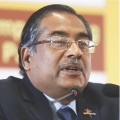
The cables that are used on ground cannot be used in space because there are many factors that operate only in space.
Speaking on the topic, “Cables and Wires in Space Industry”, Anil C. Mathur, Group Director (Retd.), Space Applications Centre, Indian Space Research Organization (ISRO), said, “We are still importing cables and wires for space use. So far there is only one company in the country, Sanghvi Aerospace in Gujarat, which is making space-qualified cables,
“Worldwide the space research started in the 1950s. Russia was the first country to send its satellite, Sputnik 1, in 1957. Space research in India started in 1960 at Physical Research Lab, Ahmedabad, under DAE. ISRO was formed in 1969 and Department of Space was formed in 1972.
“In space, we see many applications of cables. We do tethering in the mechanical area. If astronauts go out of the spacecraft or space station without tethering, they would be lost – and that’s because there is no gravity in space. Cables in the space sector are also used for power transfer to all subsystems like solar panels, batteries, etc. They are also used for transmission of Radio Frequency and Microwave signals in electronic circuits. Cables are used for data transfer – from satellite to ground. There are numerous applications of cables in space systems, ranging from antennas to high-resolution cameras and radar sensor equipment.
“The cables that are used on ground cannot be used in space because there are many factors that operate only in space. The first factor is atomic oxygen. Oxygen is available in space only in atomic form. These atoms attack all materials – whether metal or polymer. So, the material that you send into space has to survive this attack. It means we have to protect our cables from atomic oxygen. We also need to protect the materials that we send into space from UV Radiations. These materials should also be able to withstand extreme temperatures – ranging from – 80 to +200 deg cent. The next factor is outgassing, which is a property of a material when it is under vacuum condition. The materials around us do not produce any gas. But they will start producing some sort of gas in space. This is an outgassing property, in vacuum. So if the cable or insulation we are using starts producing gas, the gas released will affect the performance of our electronic systems; for example, the performance of cameras. Another space-related factor is zero gravity. There is no gravity in space. As a result, all systems have to work under zero gravity. The cables needed in space have to go through all these tests and qualify. Only then the cables will be certified space-qualified.
“In electrical coating, we do a lot of coating. Here we do PVC coating/ Teflon coating. For some of the wires, we do gold or silver plating to increase their electrical conductivity. Gold remains absolutely unaffected in space; so does silver, but to a lesser extent as compared to gold. So we use fluoro-polymer materials like FEP, PTFE, ePTFE (expanded PTFE), Polyimide (Kapton) and Teflon for coating and insulation.
“The space industry places very stringent demands on features such as wire and cable overall performance – it should be 100 percent; low mass, high-efficiency, high-bandwidth and high reliability; good performance under radiation, high vacuum and out gassing; the weight has to be minimum; and no maintenance for decades. The other critical requirements or special features for space use include ease in bending/ twisting, mechanical robustness, ease in joining, ease in stripping, perfect connection with terminals, harnessing, electrical performance, plating of conductor, no peeling of plated material, shielding of wires, no arcing, and high insulation. Many wire and cable companies are supplying quality cables and wires to ISRO.
“At some places the temperature range changes. The operating temperature range is -100°C to +200°C. So, cables and wires should be able to withstand these changes. The other environmental characteristics are non-flammable, very good solderability, current rating – up to an ambient temperature of 150°C, derating factors must be applied for cables and wires in bundles, high resistance to chemical agents, fluids and space radiations, the 2 µm thick layer of silver-plating on the conductor, and shield should provide the best protection against the Red Plague phenomenon.
“Data transmission is essential to the success of every space mission. If data can’t be transmitted, the spacecraft could lose communication with mission control, leading to a crippled or a failed mission. Data cables should provide bidirectional, high-speed data transmission up to 400 Mbit/s with minimal crosstalk, signal attenuation and low skew. To save costs, cables can be integrated into many different satellite programs without the need for custom designs.
“Extreme cold conditions can have an impact on wire/cable flexibility. In the NASA experiment, different insulated wire and cable pieces were cold soaked in liquid nitrogen then subjected to bending. The mechanical failure of the insulation occurred in lower gauge wires with thicker insulation.
“Conductor/shield platting types for space applications are very limited. NASA and ESA have identified a method for evaluating silver plated conductors. Noncompliance with outgassing requirements could result in excessive contamination of an instrument or the complete failure of a space flight mission. The selection of polymeric materials with low vacuum outgassing characteristics is an essential part in the selection of materials for use in space flight hardware. Low outgassing materials are required. Excessive outgassing can degrade the structural integrity of materials. These baked-on deposits cannot be removed easily in addition thermal control surface properties are significantly affected.
“Radiation endurance and performance impact in space systems. When an area of insulation becomes ionized (such as by radiation), the ionization may remain on the insulation for a prolonged period. If a sufficiently high enough voltage differential is created, the result can be a corona discharge. This can impact system signal integrity and potentially erode the insulation performance. Wire insulations with lower resistivity values are selected. In doing so, the localized impacts of the ionizing radiation are dissipated through the insulation safely without impacting system performance or insulation reliability.
“The space cables we currently use include cables such as flexible coaxial cable, Twinax coaxial cable 120 ohm, quadraxial cables, single core, single core shielded and jacketed, multi core, 2 &3 cores, multi core shielded and jacketed, low fluoride SPEC 55, electroloss, polyimide wire shielded/unshielded, copper magnet wire, LVDS cable, SR cable, RG316 cable, RG 401 and RG 402. The Low Fluoride SPEC 55 space wire has an excellent service history. It is the smallest and lightest performance wire, rated at +200 °C for 10,000 hours and flexible at -85 °C. It is mechanically tough and low outgassing. It provides excellent resistance to chemicals. It should be noted that the Low fluoride SPEC 55 wire is not ESA approved.
“There is another company that supplies us with the CHEMINAX coaxial cable. This cable is suitable for demanding video and RF applications. It has low capacitance and attenuation and is lightweight and small in size with high velocity of propagation and flexibility. It is rated – 65 °C to 200 °C.
“The other cables are FILTERLINE ElectroLoss Cable and QUADLITE Quadraxial Cable. It is not possible for a company to make all the aforementioned cables. A company can select one of the aforementioned cables and start producing it. Later, it can go for another cable.
“Certain standards, including MIL and NASA Standard and European (ESA) Standard, have to be followed for space-grade cables. All over the world, these standards are followed. We refer to such wires as space-qualified wires or space-certified wires.
“There are some traders in Hyderabad who import these cables and supply them to us. They are not manufacturers of these cables. There is only one manufacturer in India, but this manufacturer does not produce all types of cables. This manufacturer is Sanghvi Aerospace. They developed space-qualified wires in 1993. Another company is coming up – in Ballabgarh. It has passed some of the initial tests. Hopefully, it will start supplying cables this year.”



